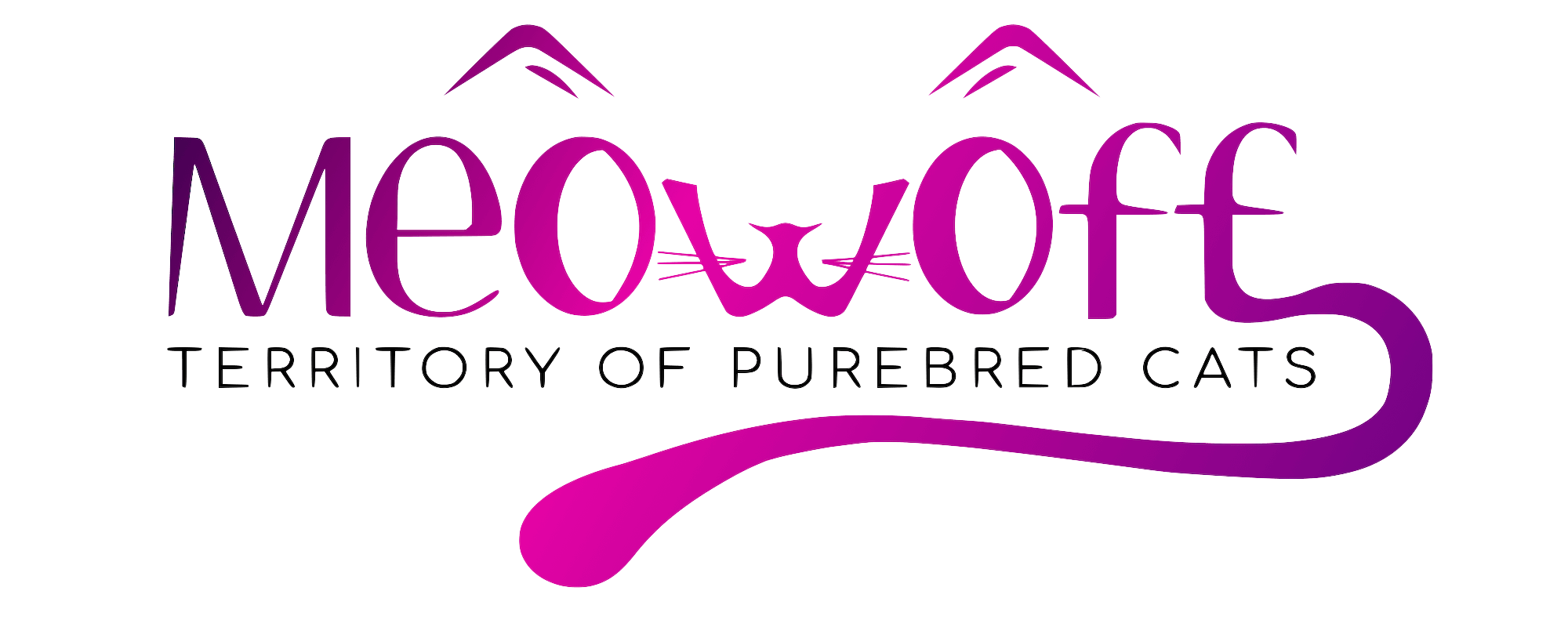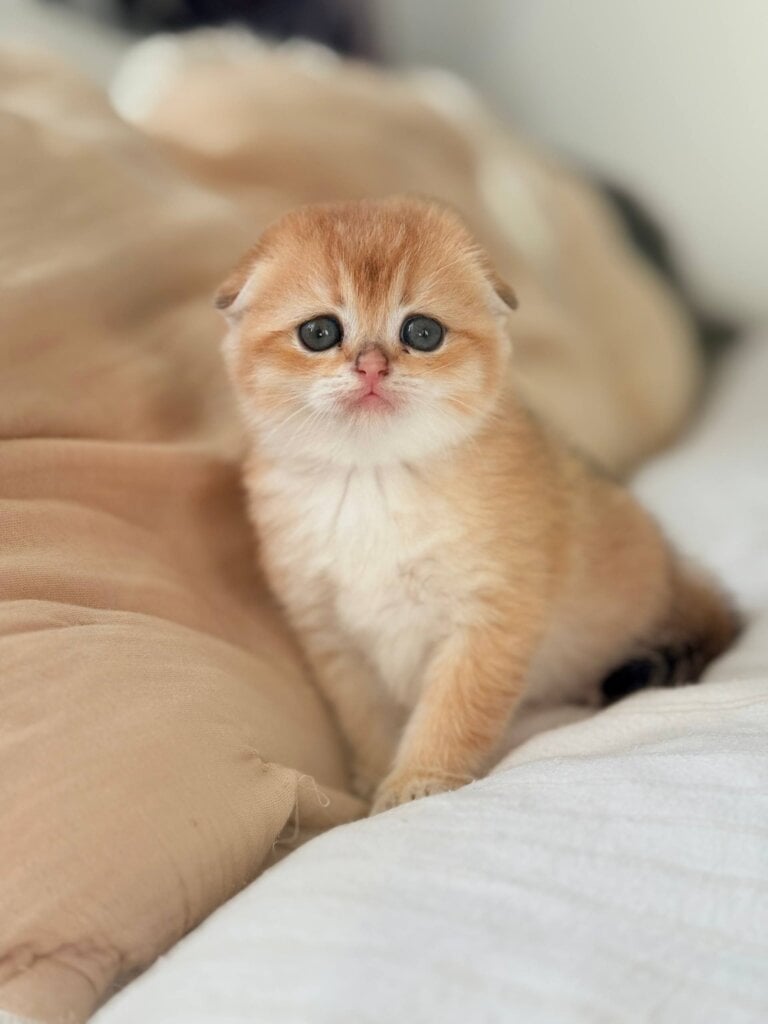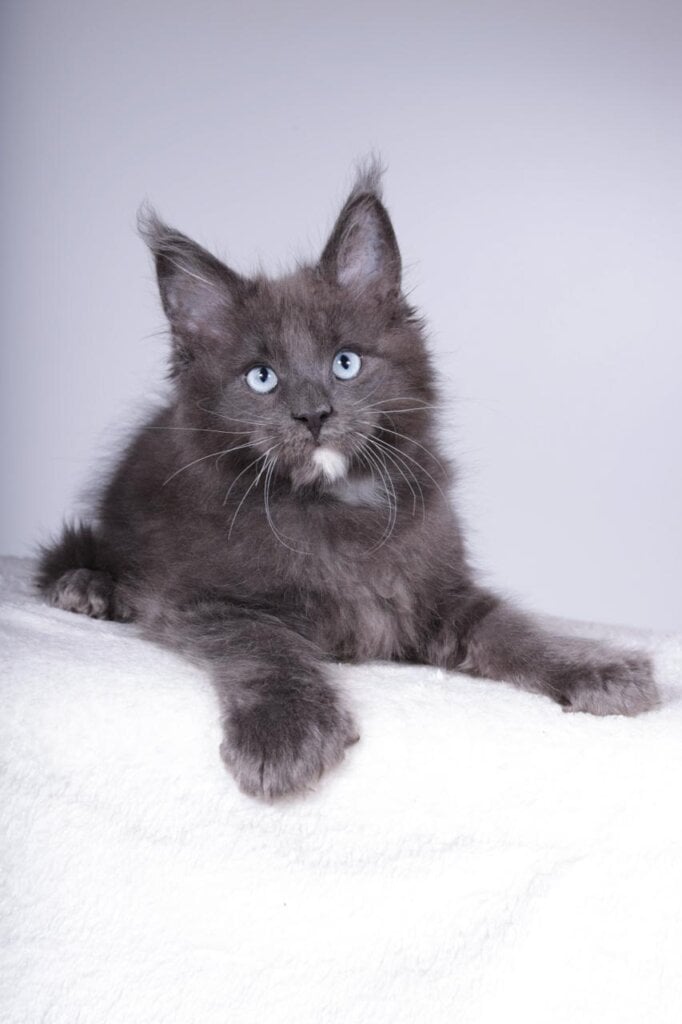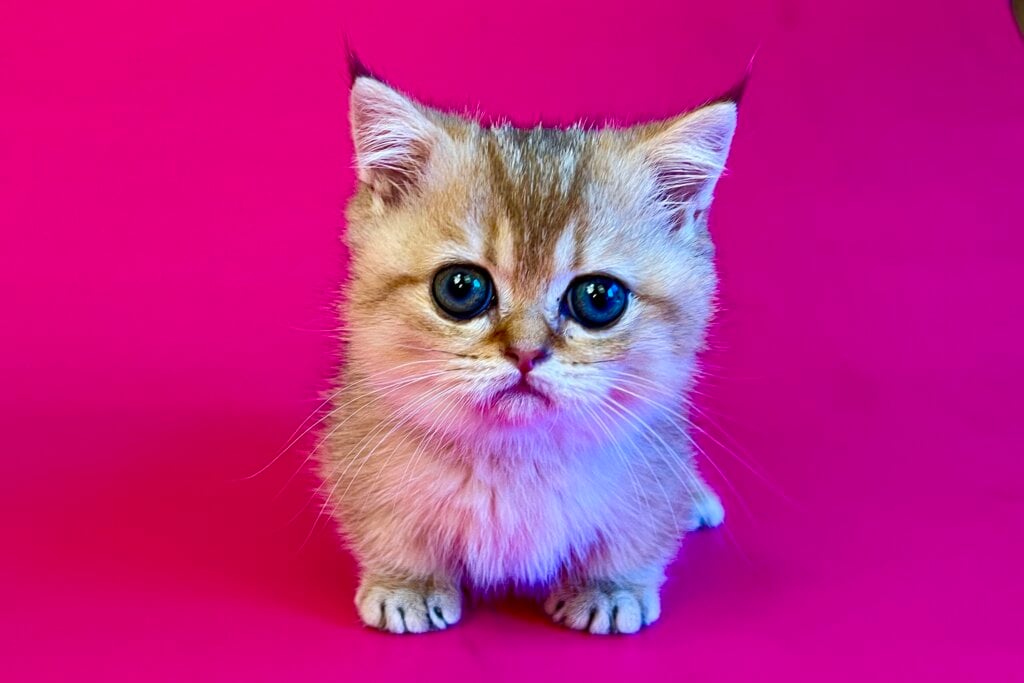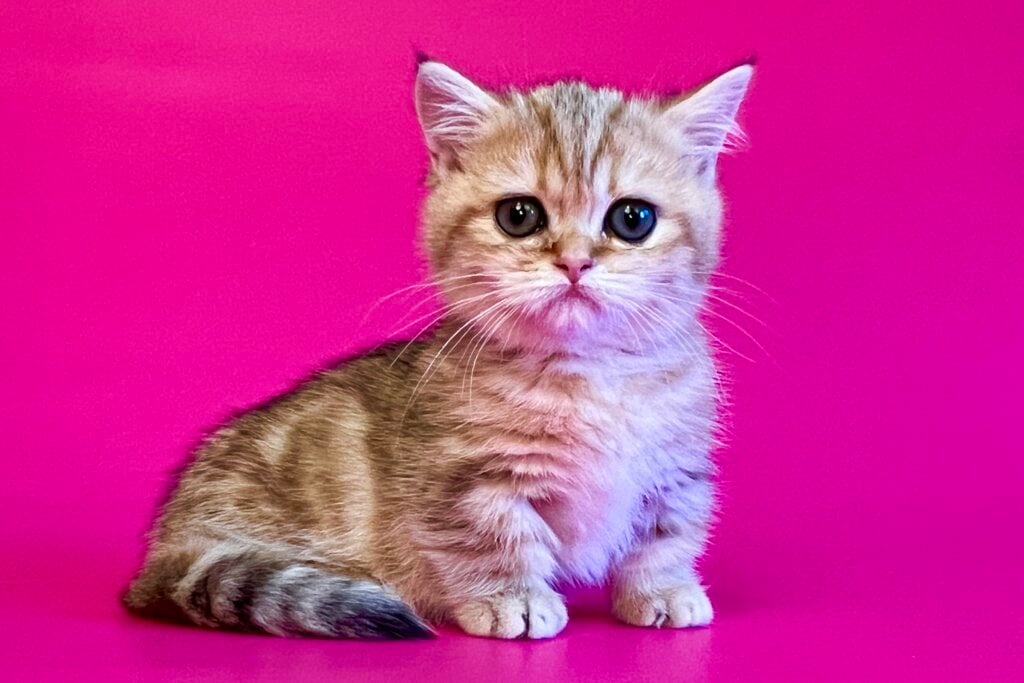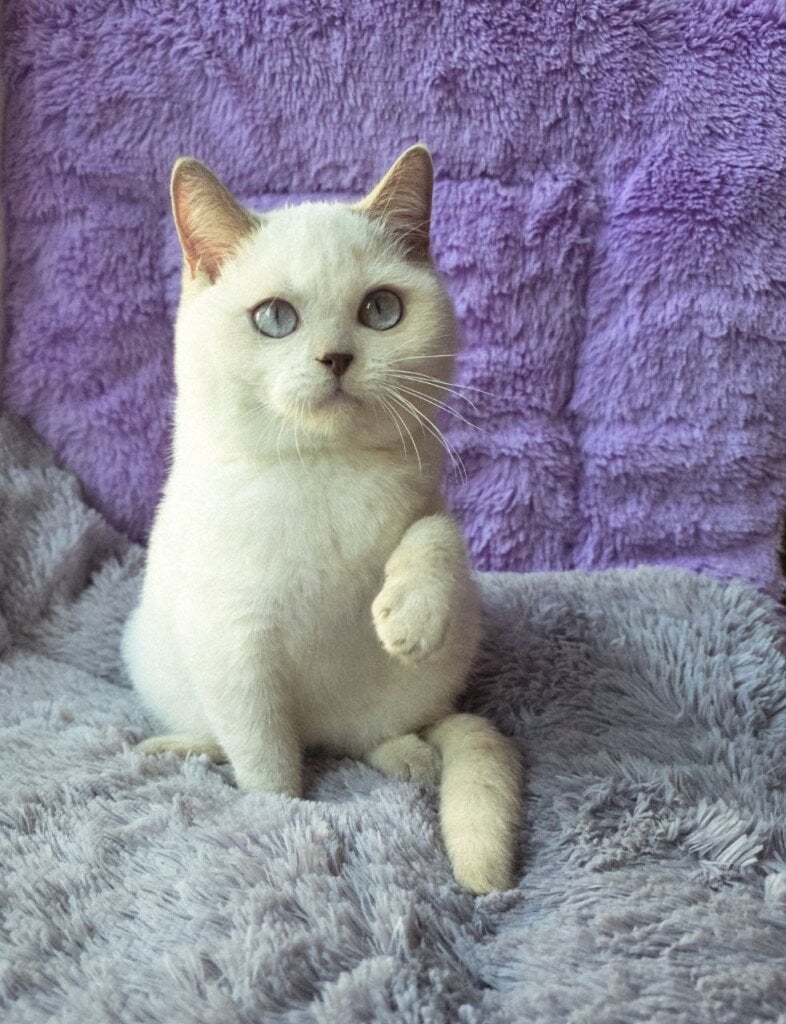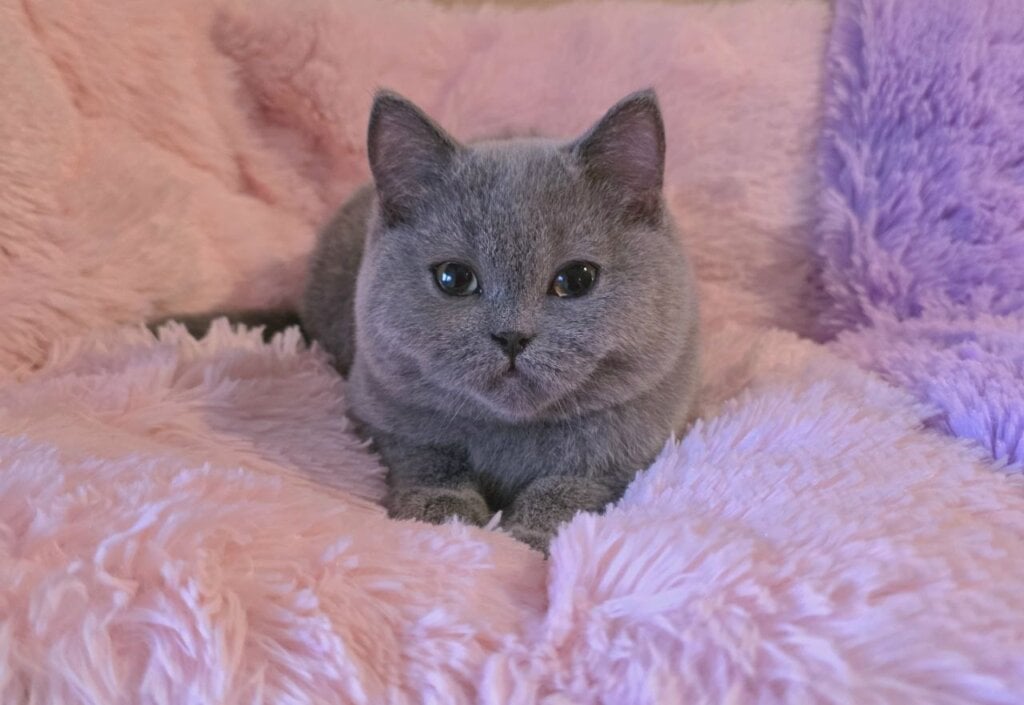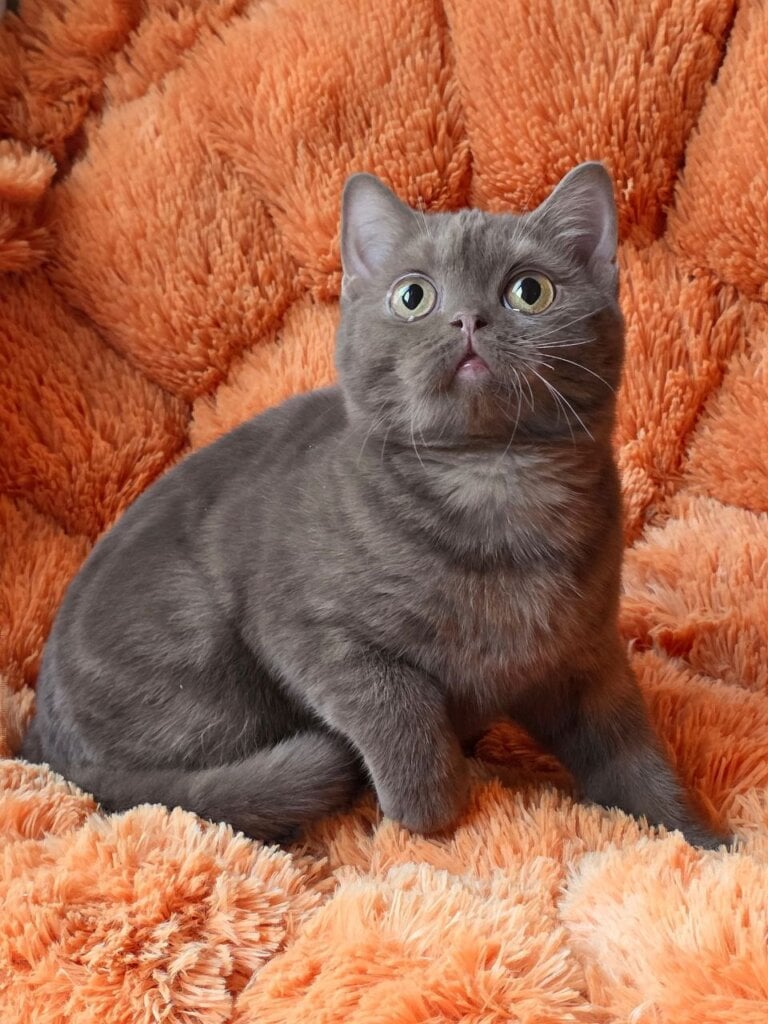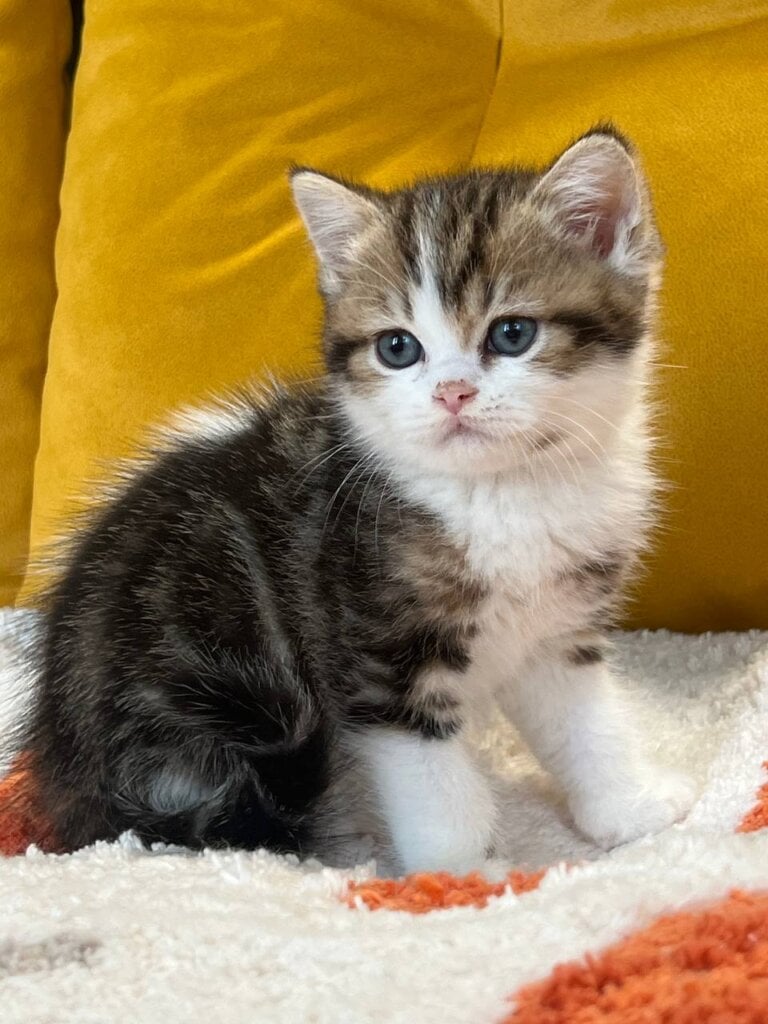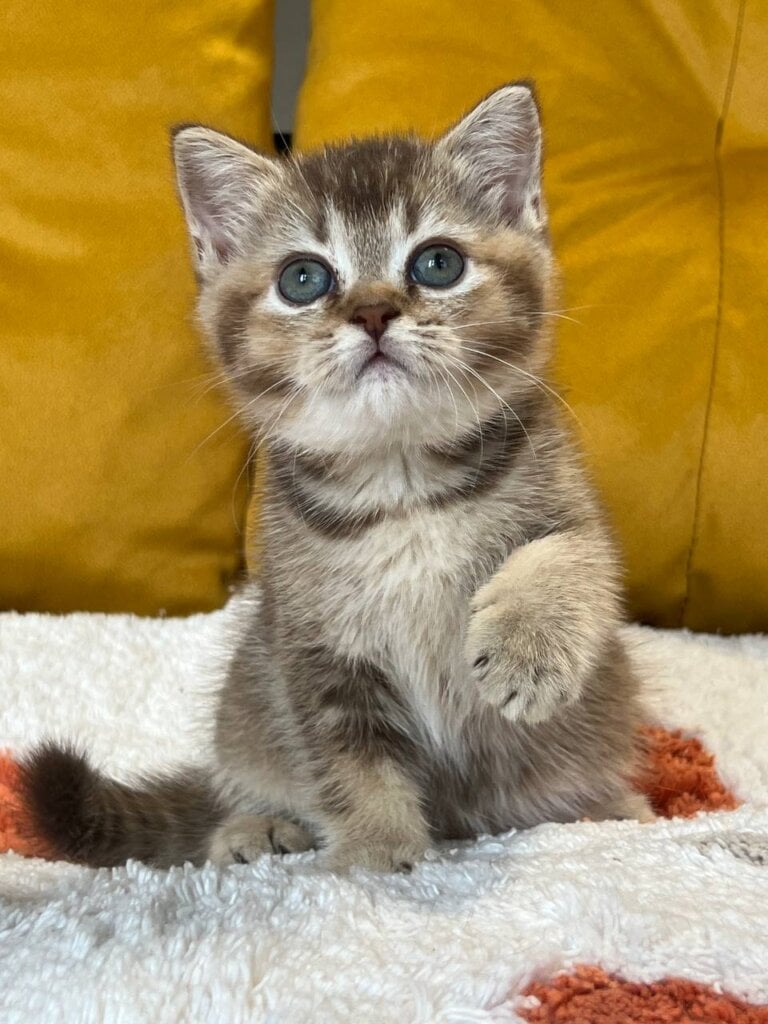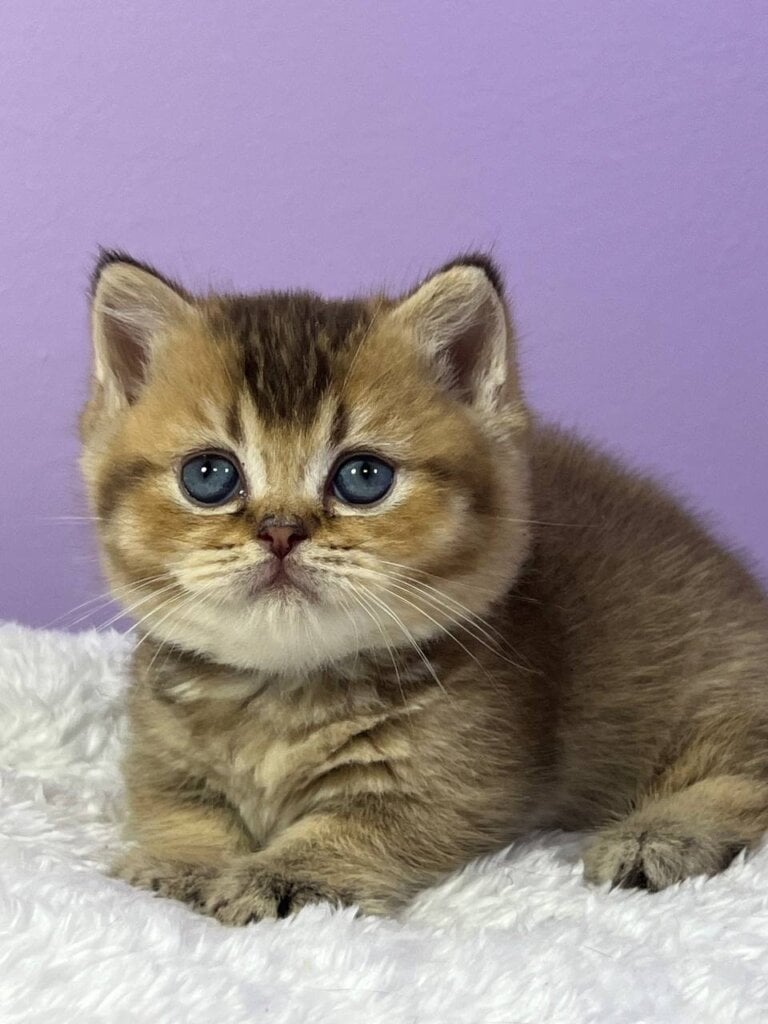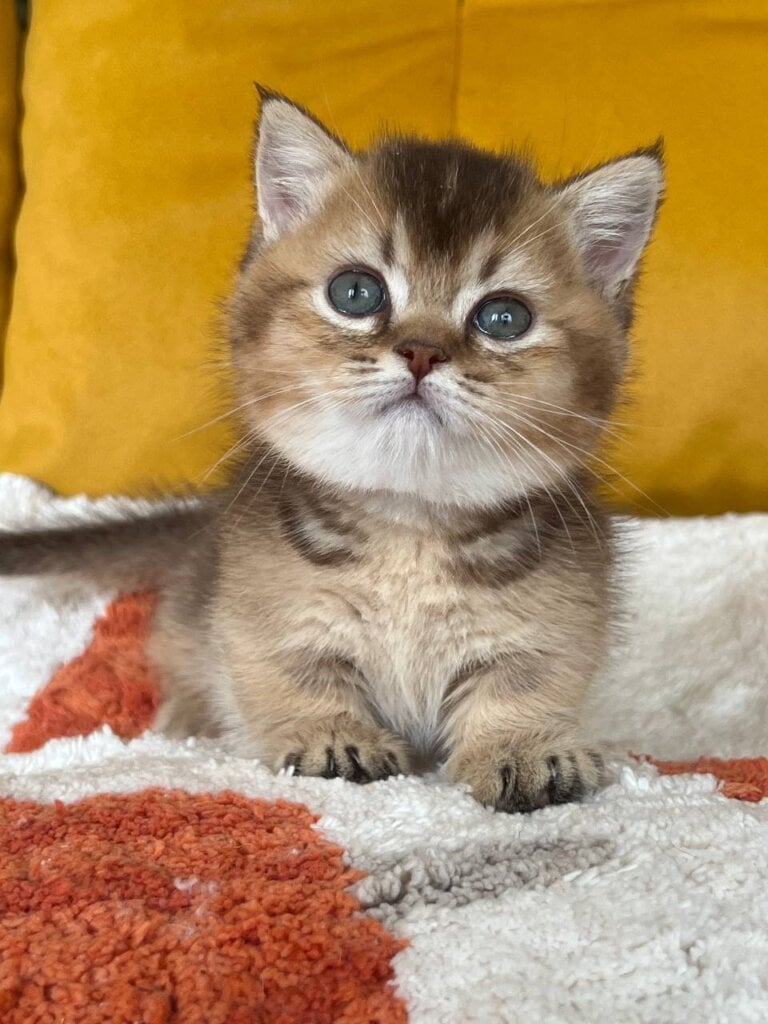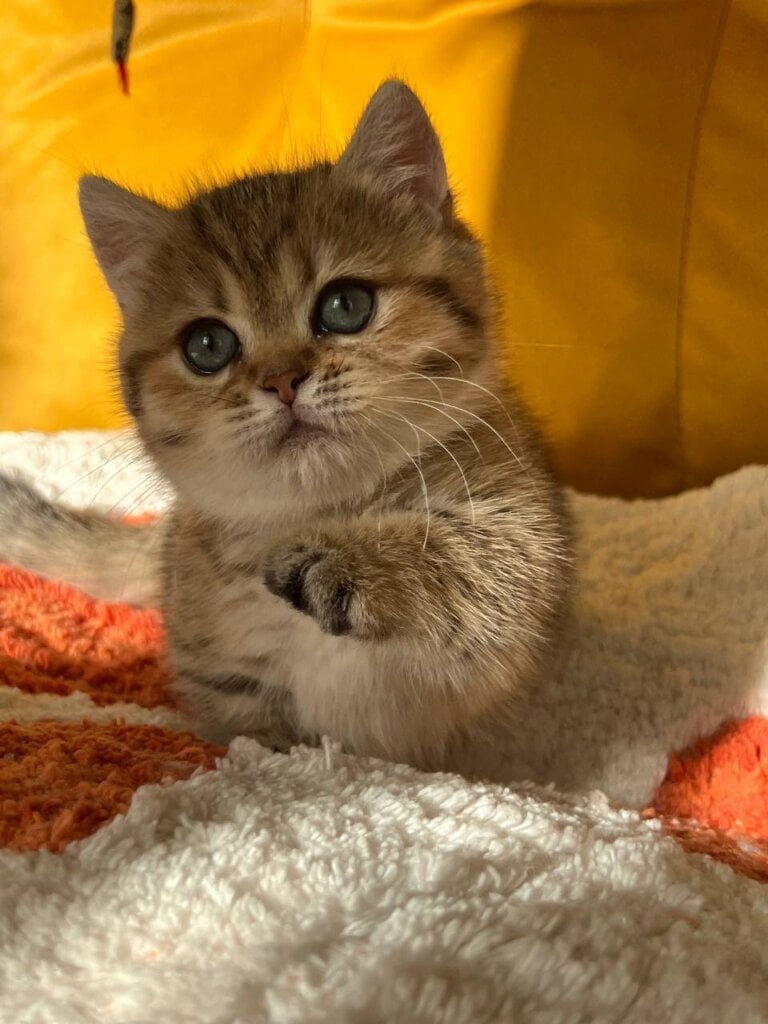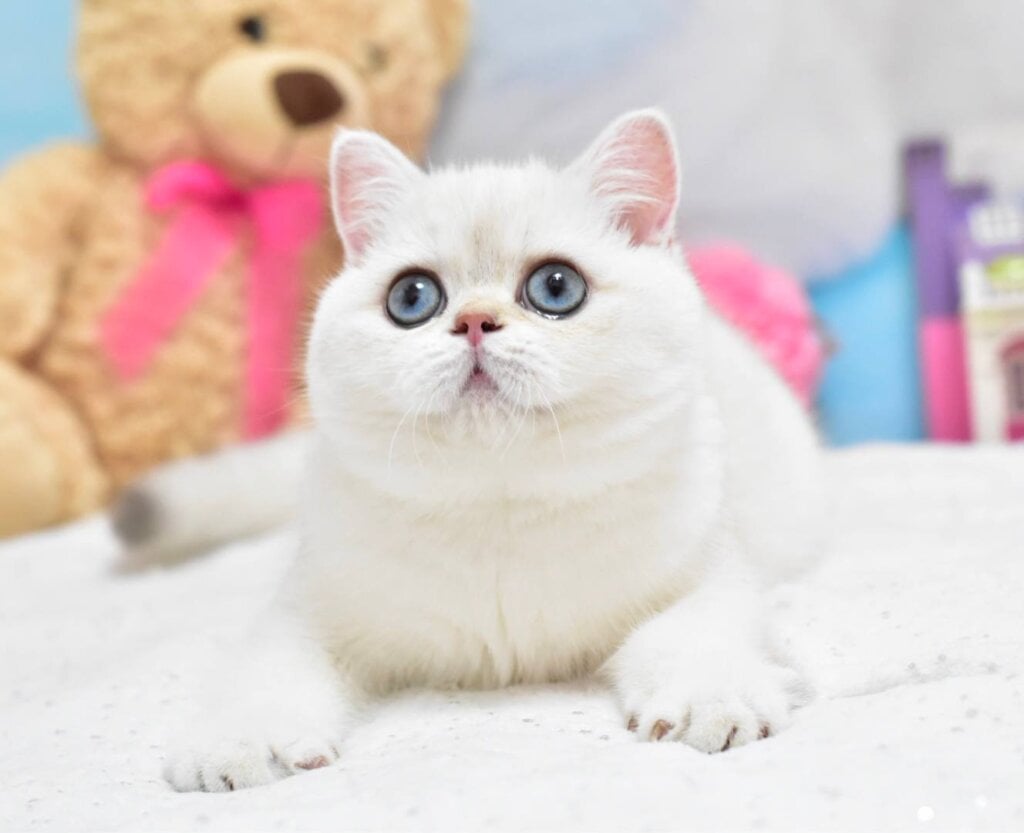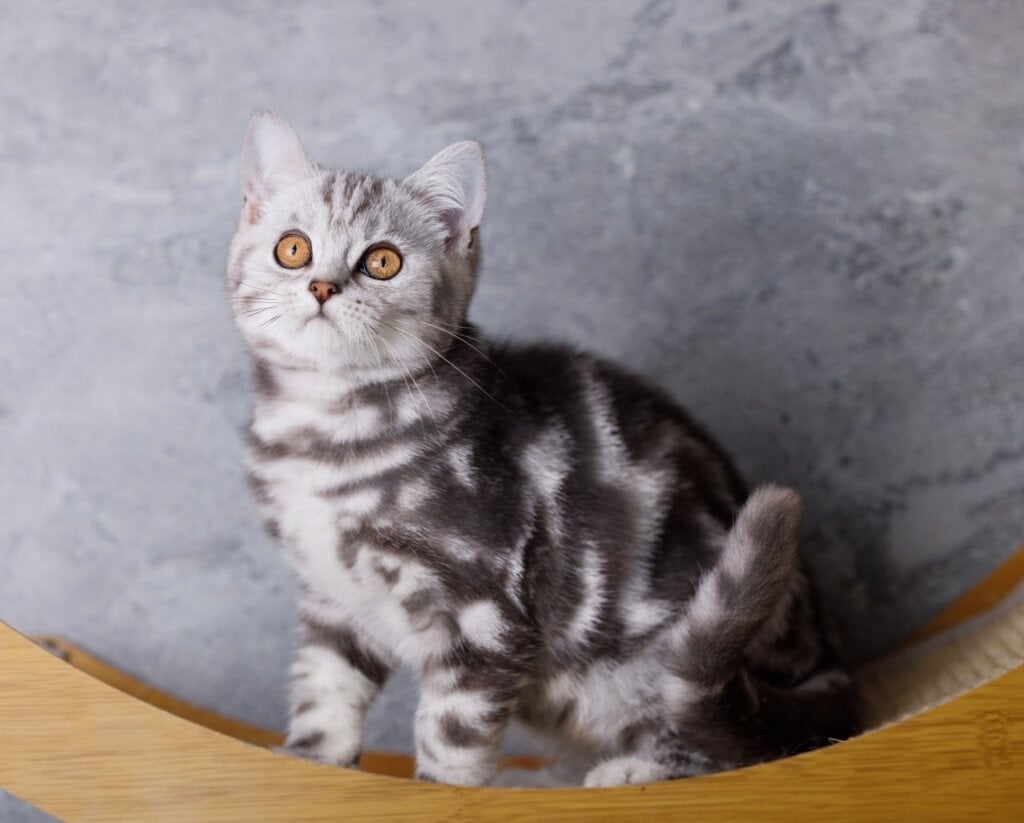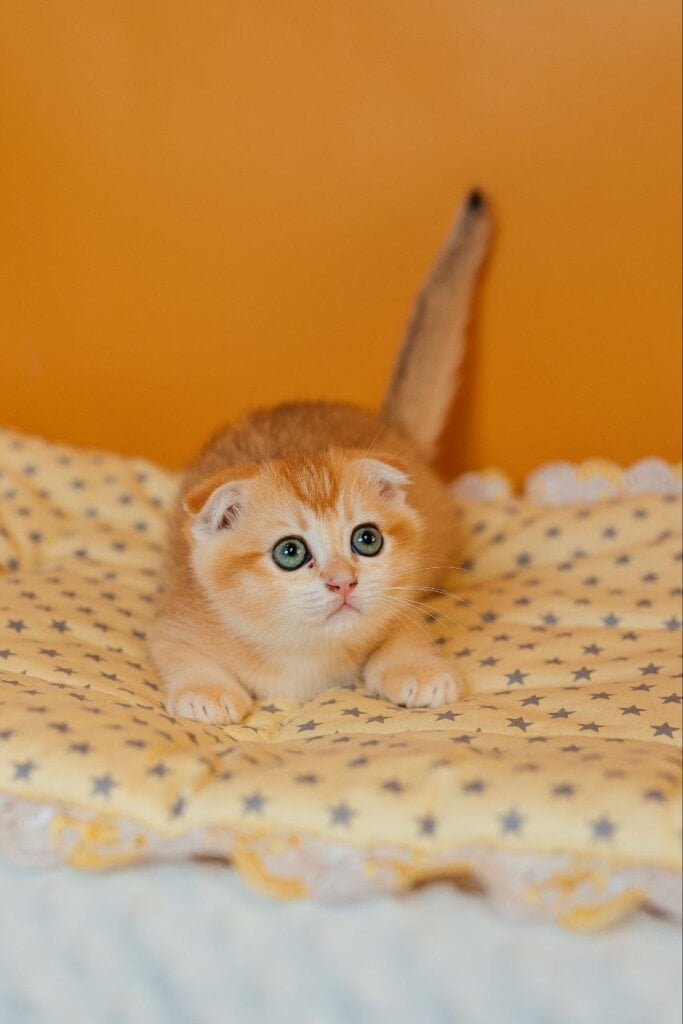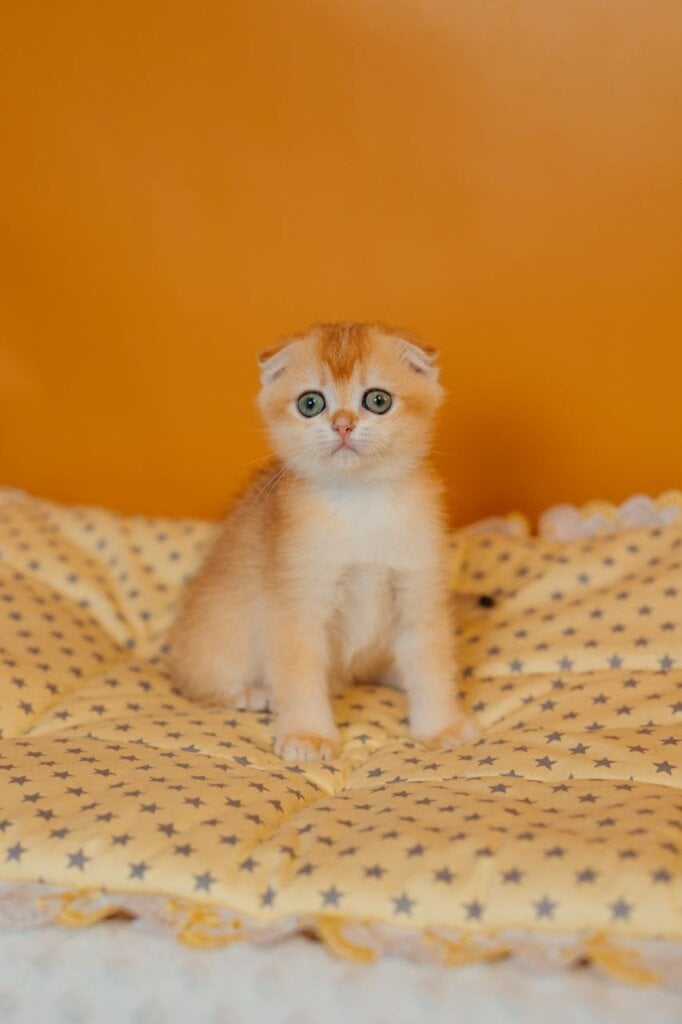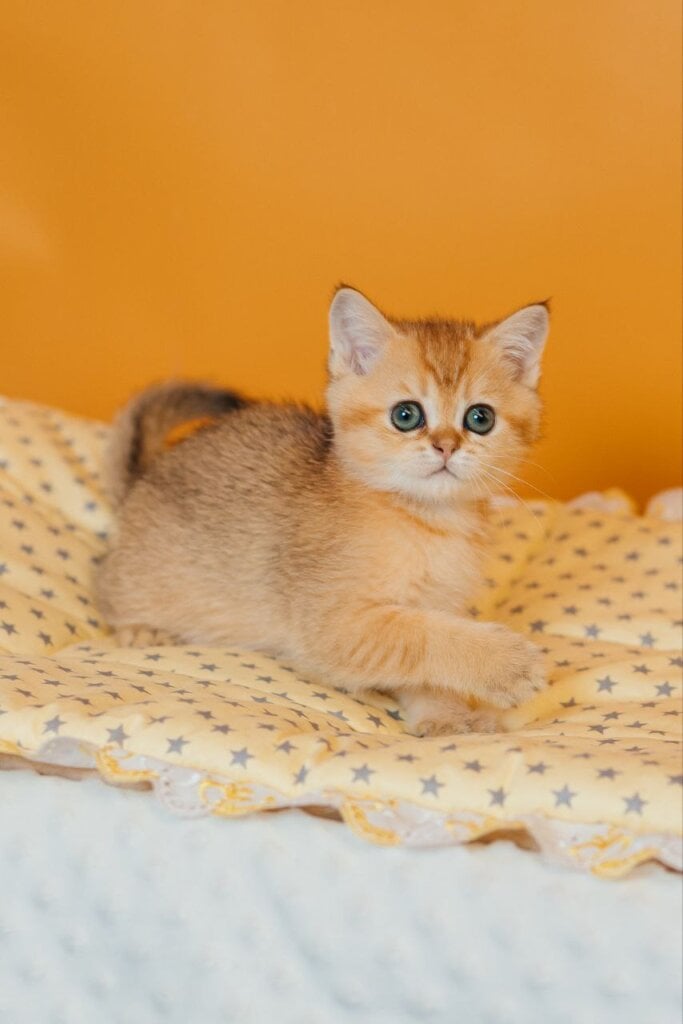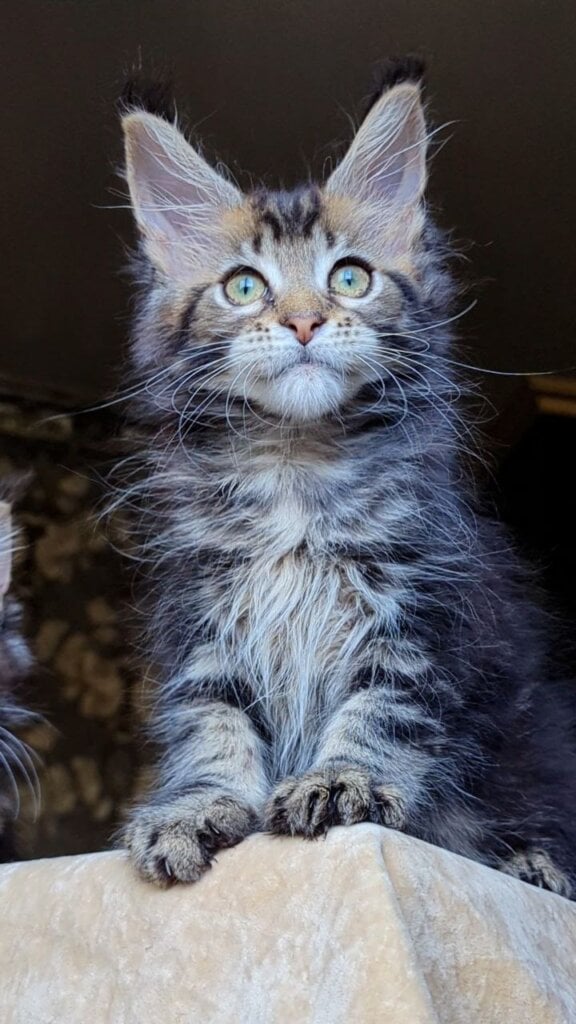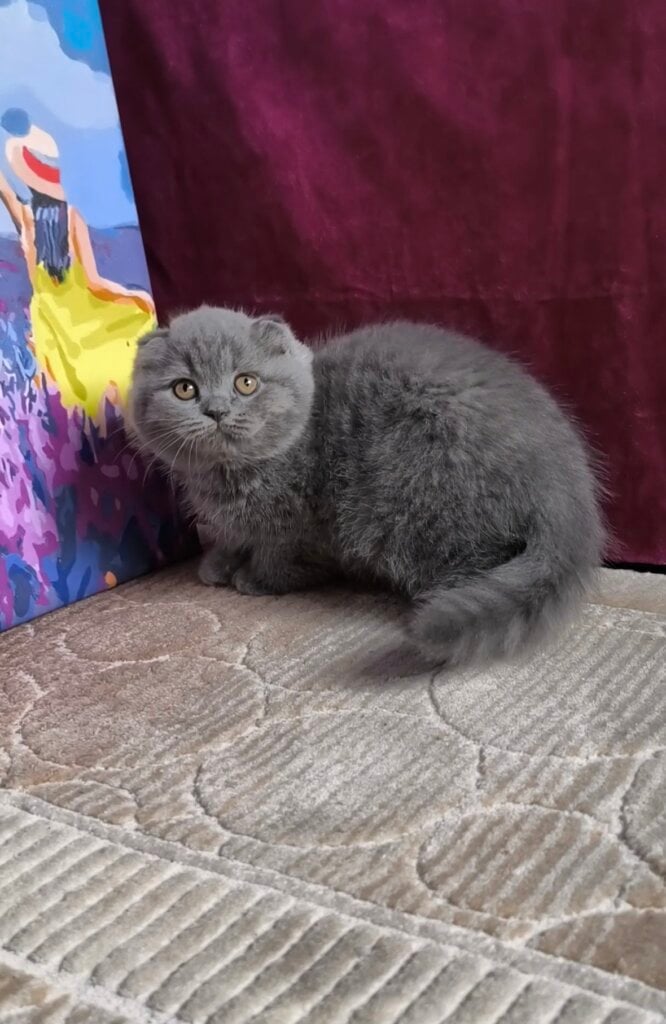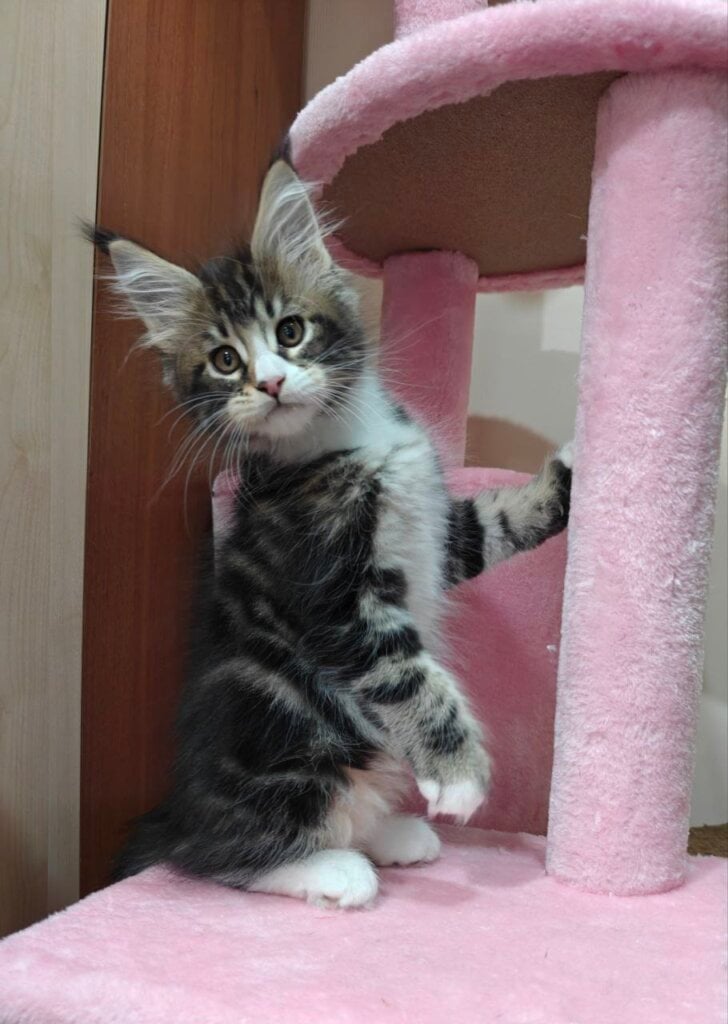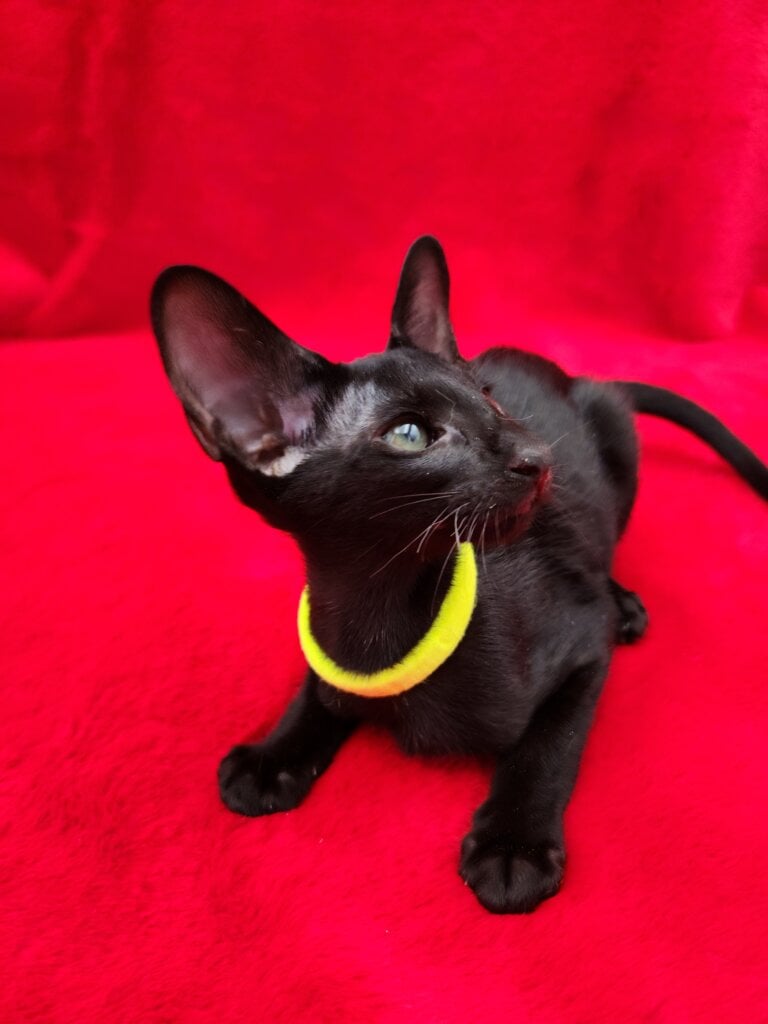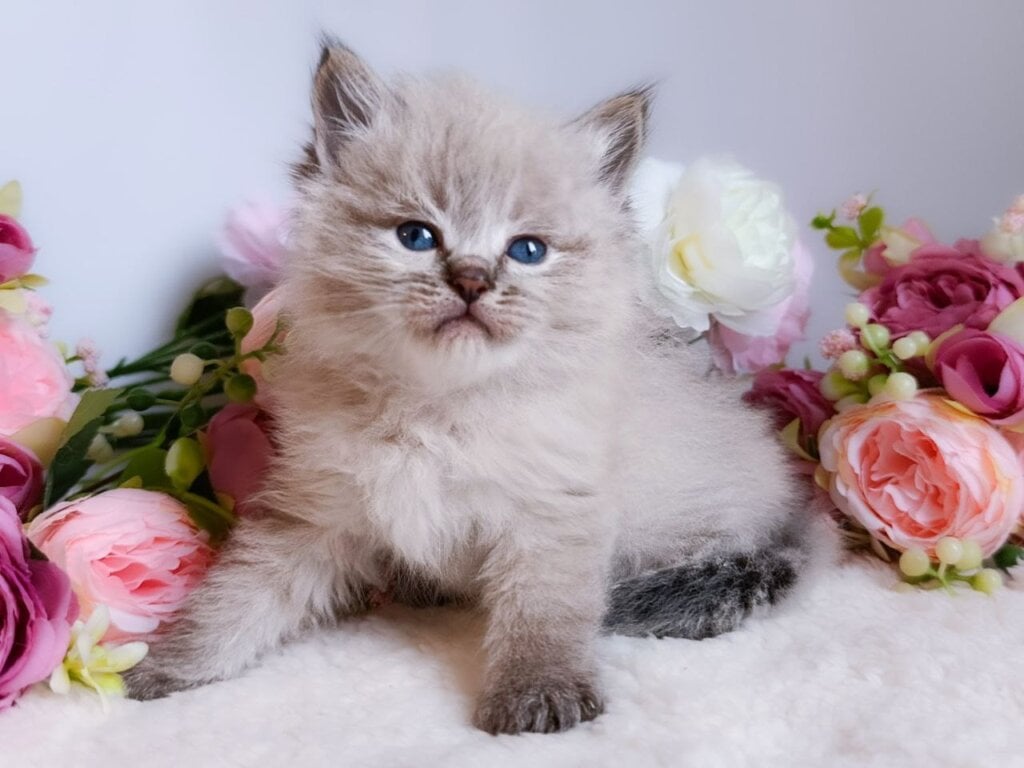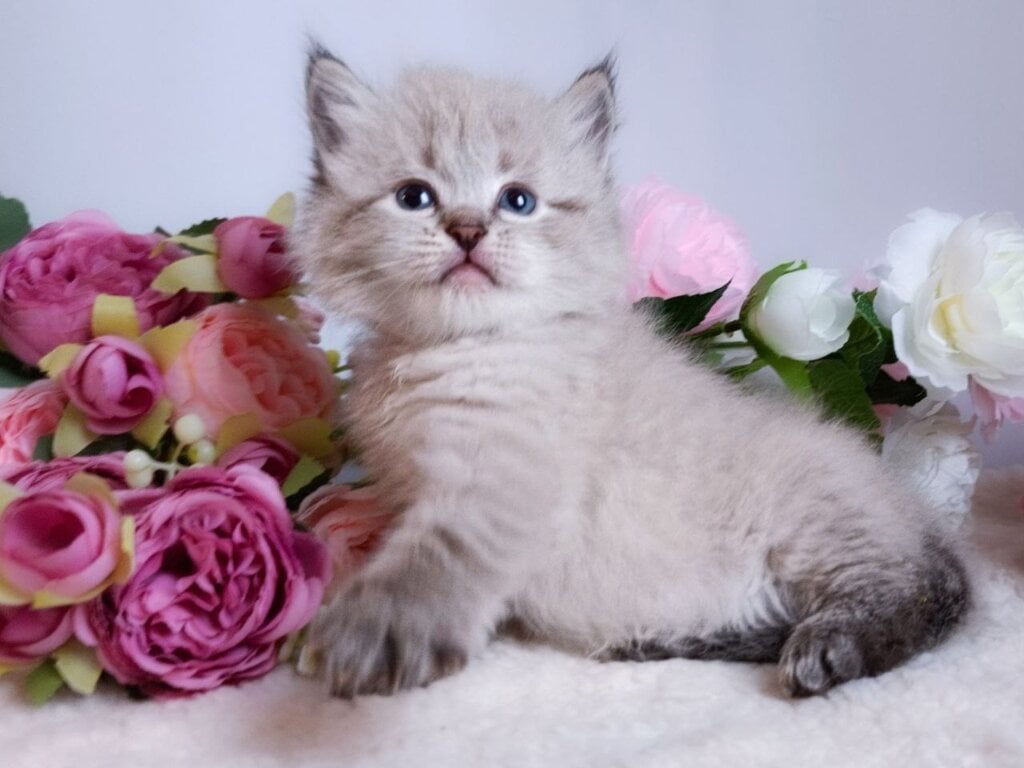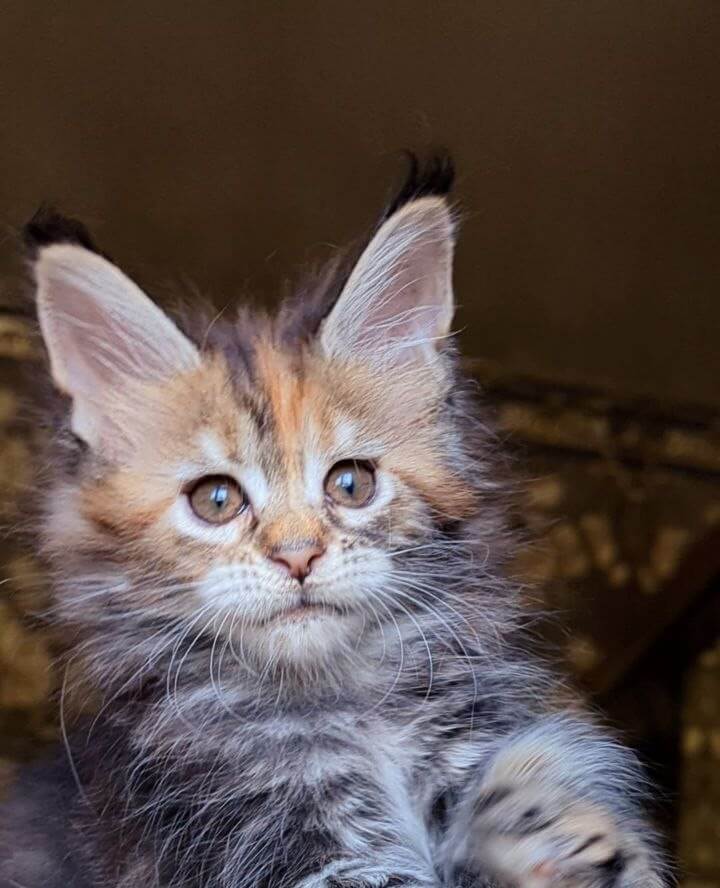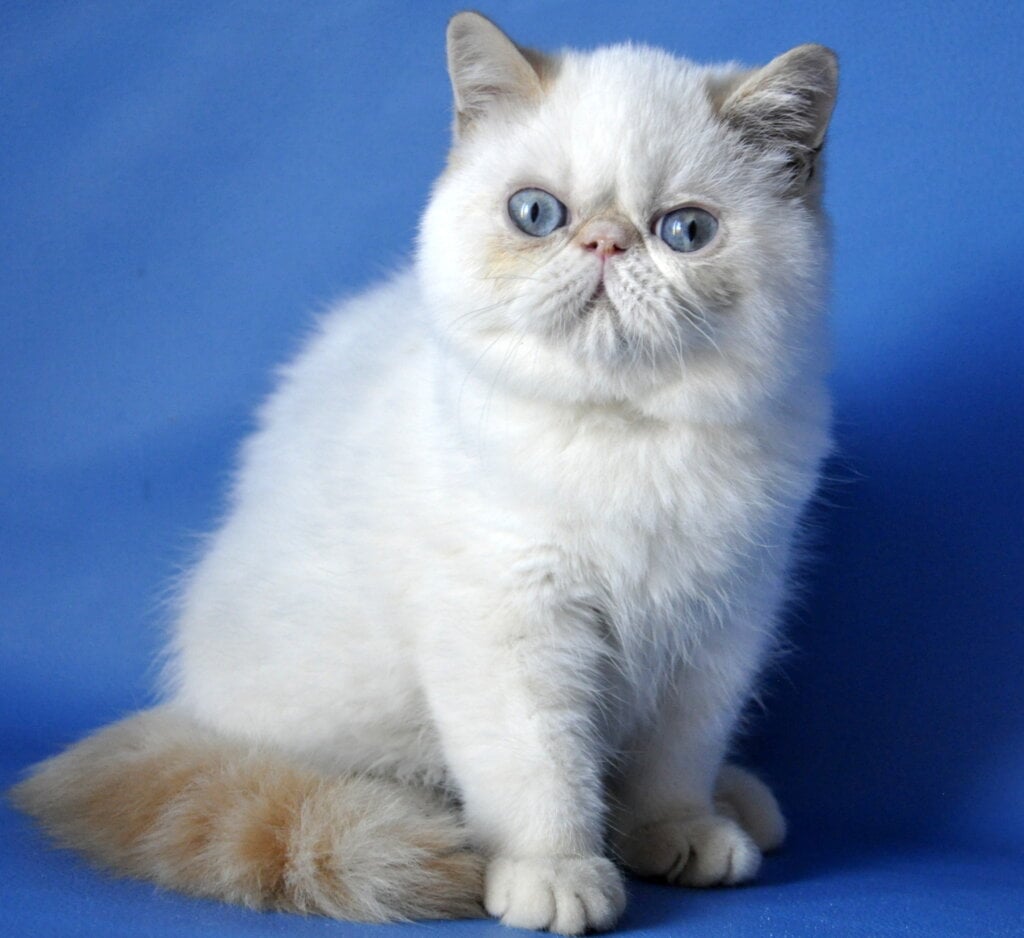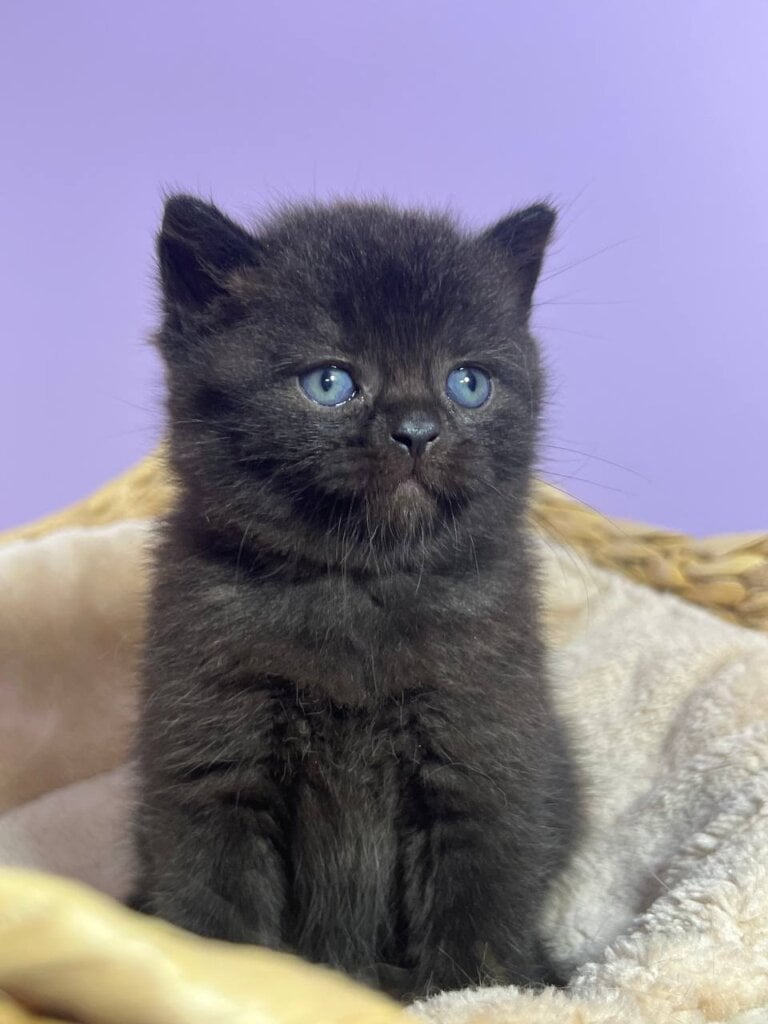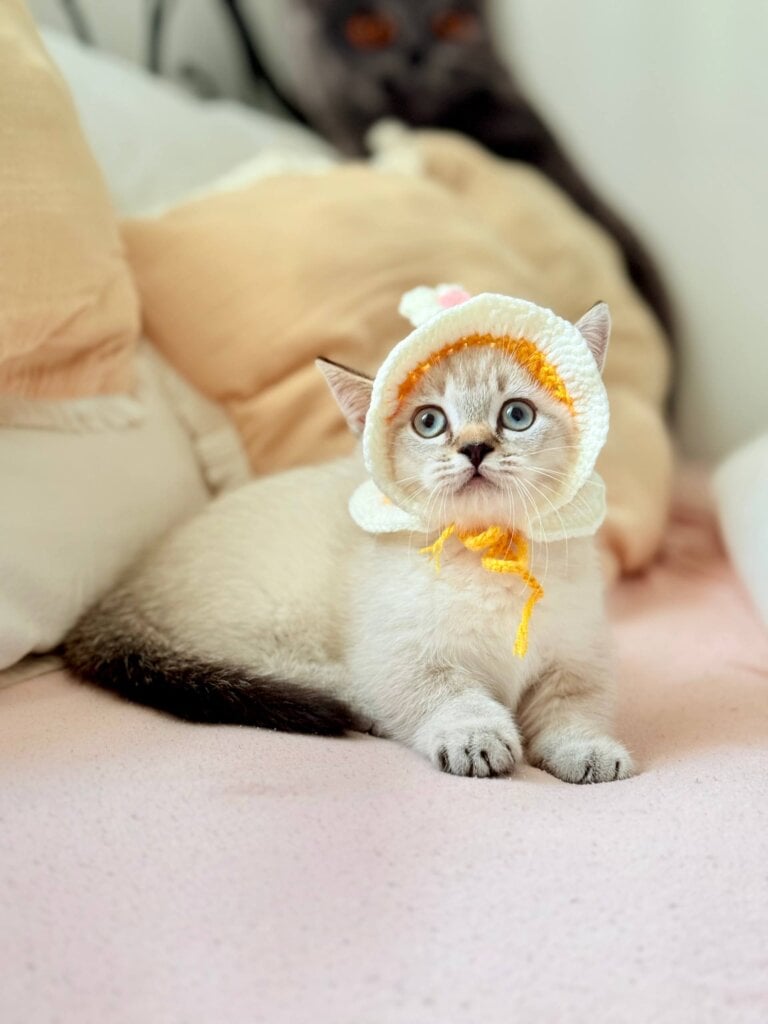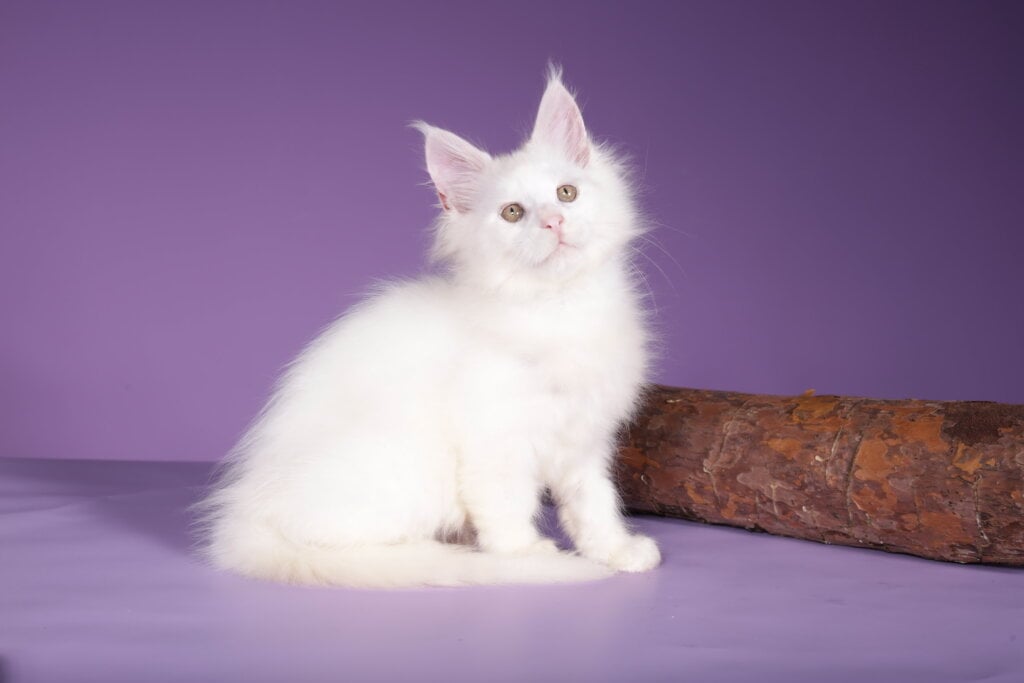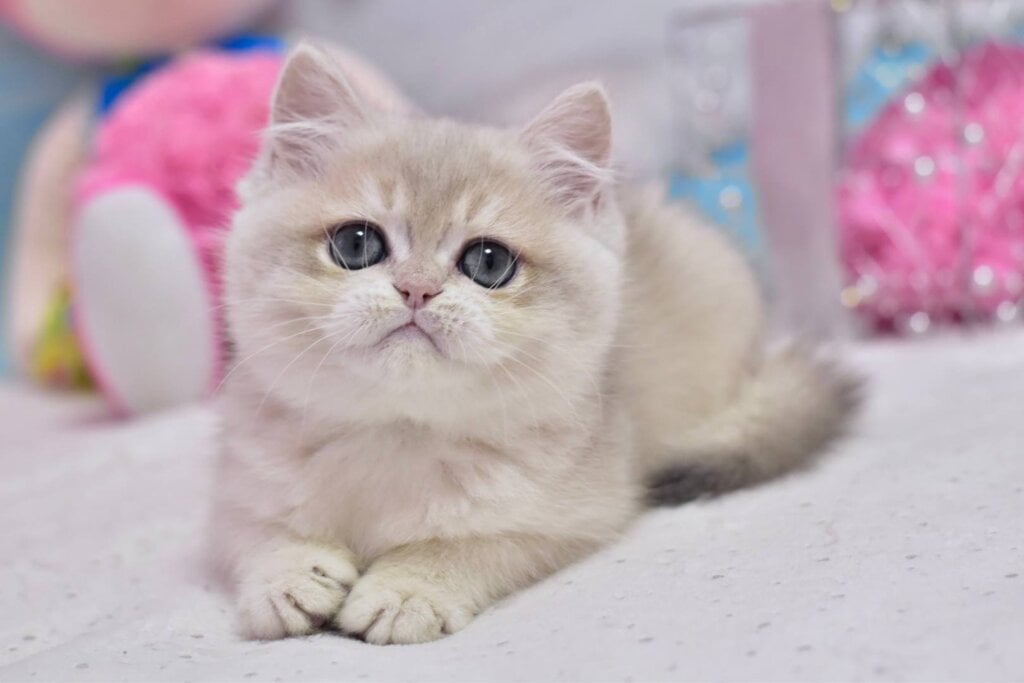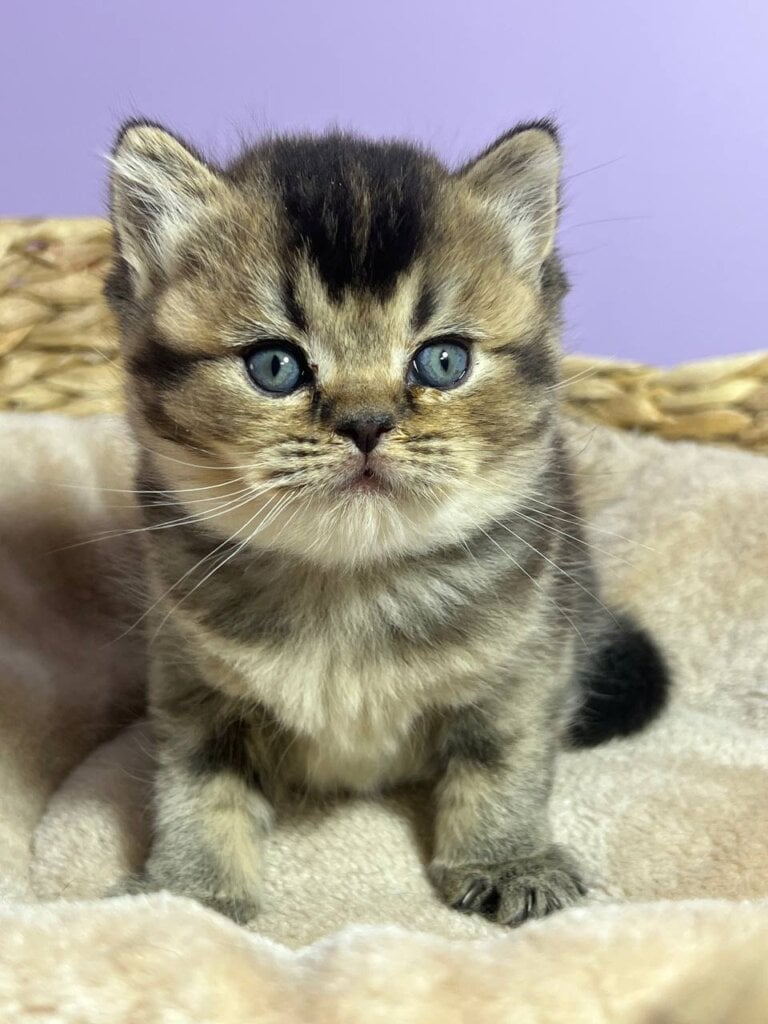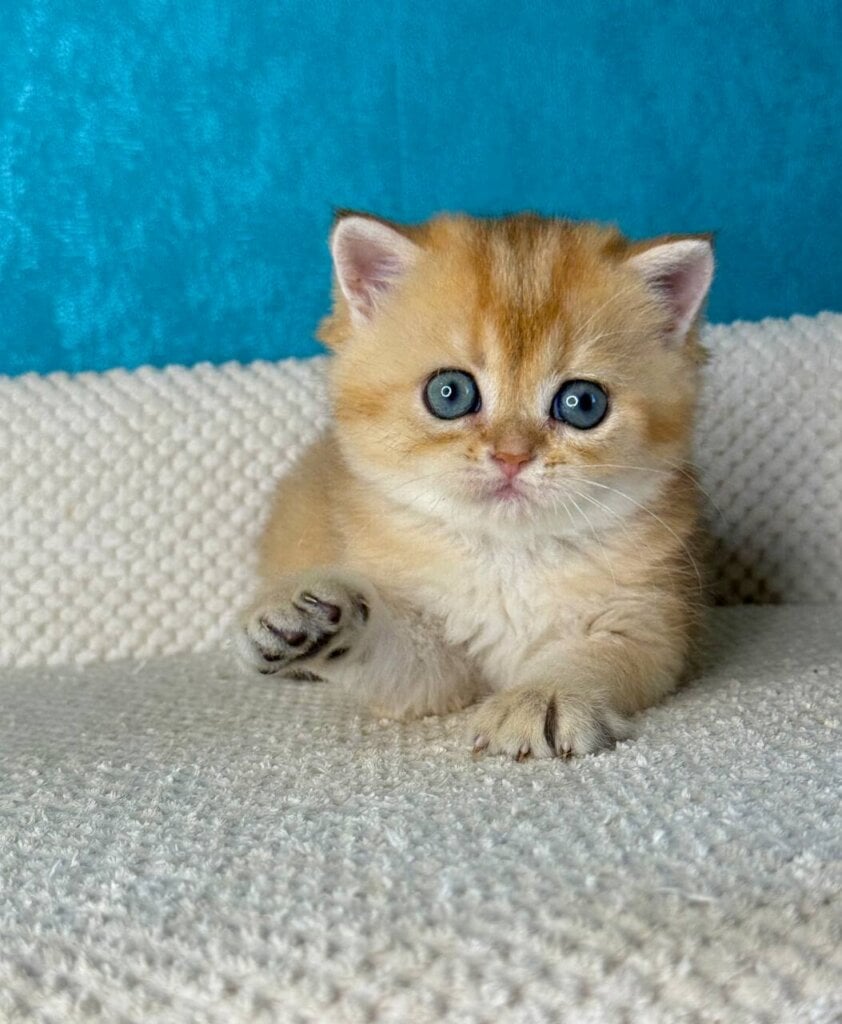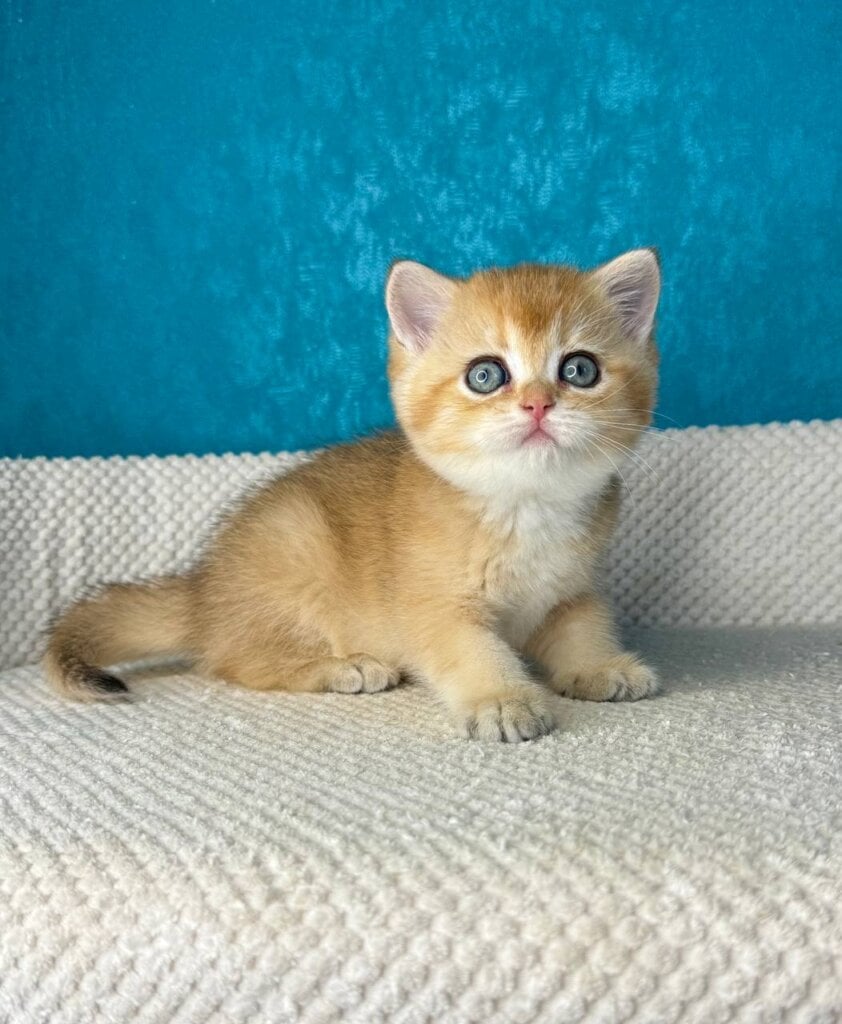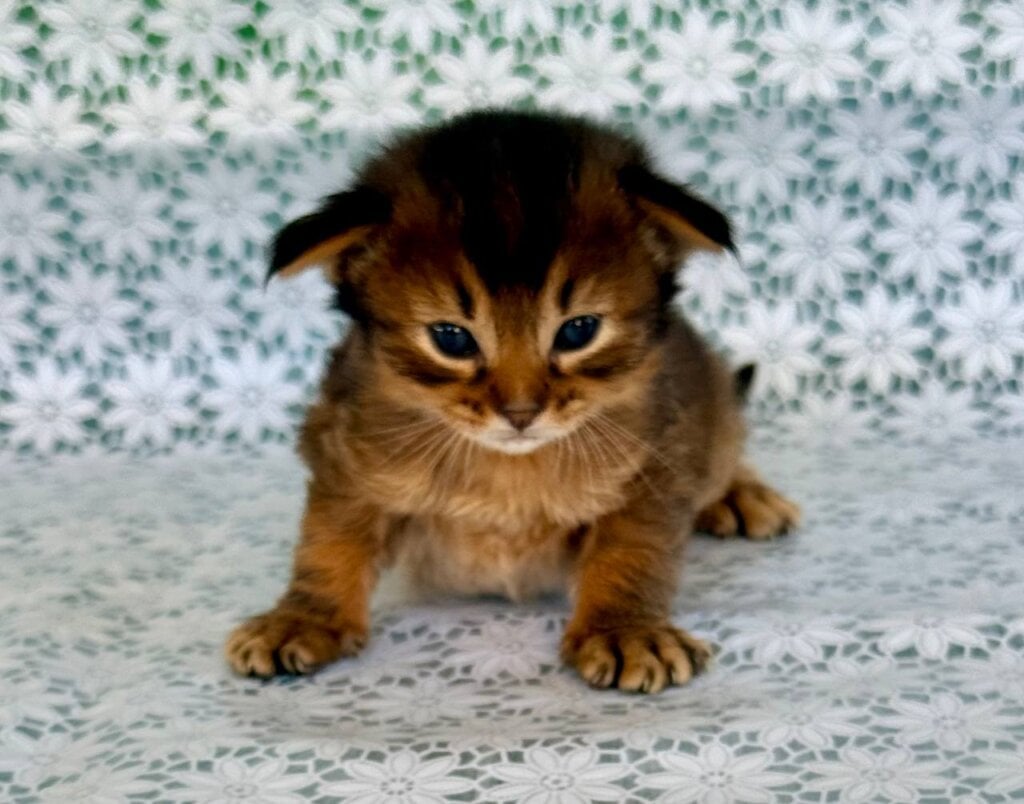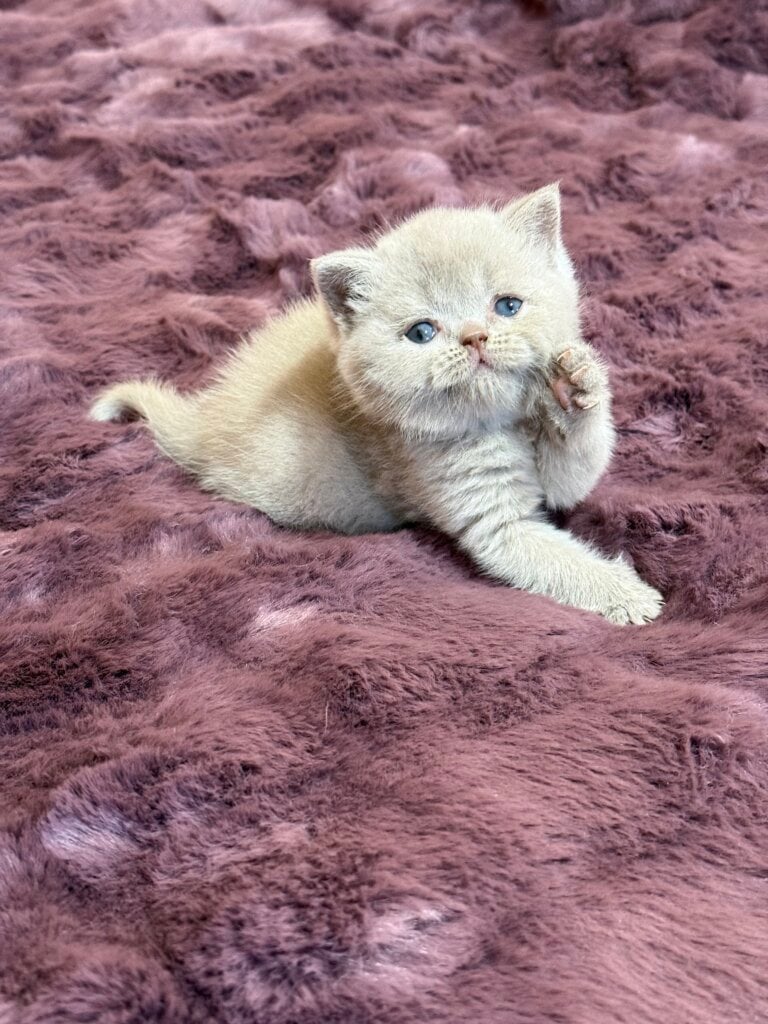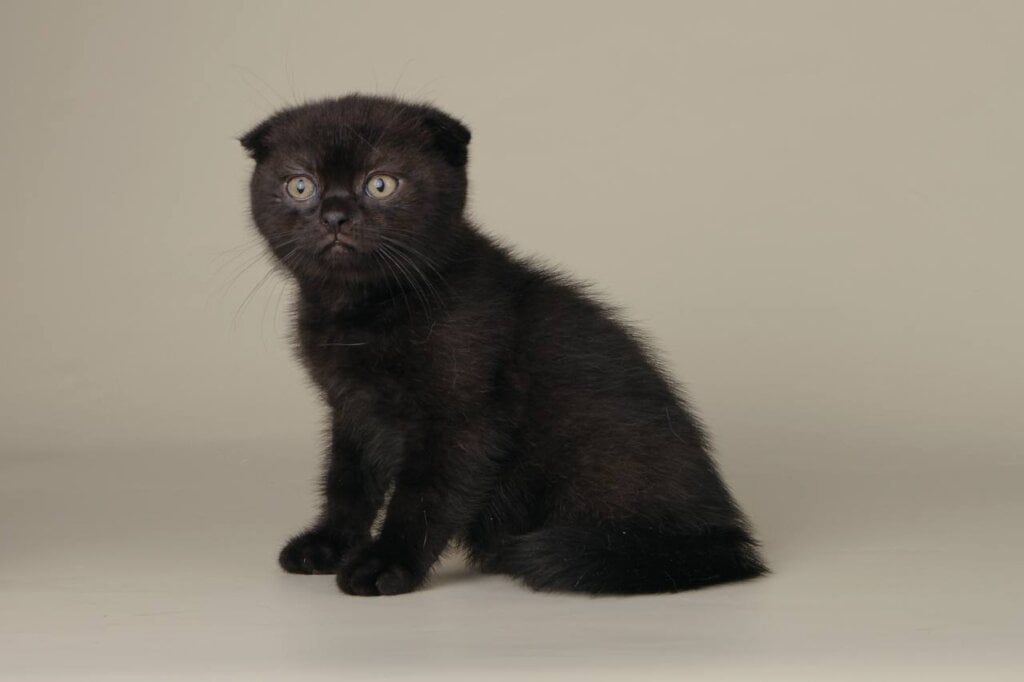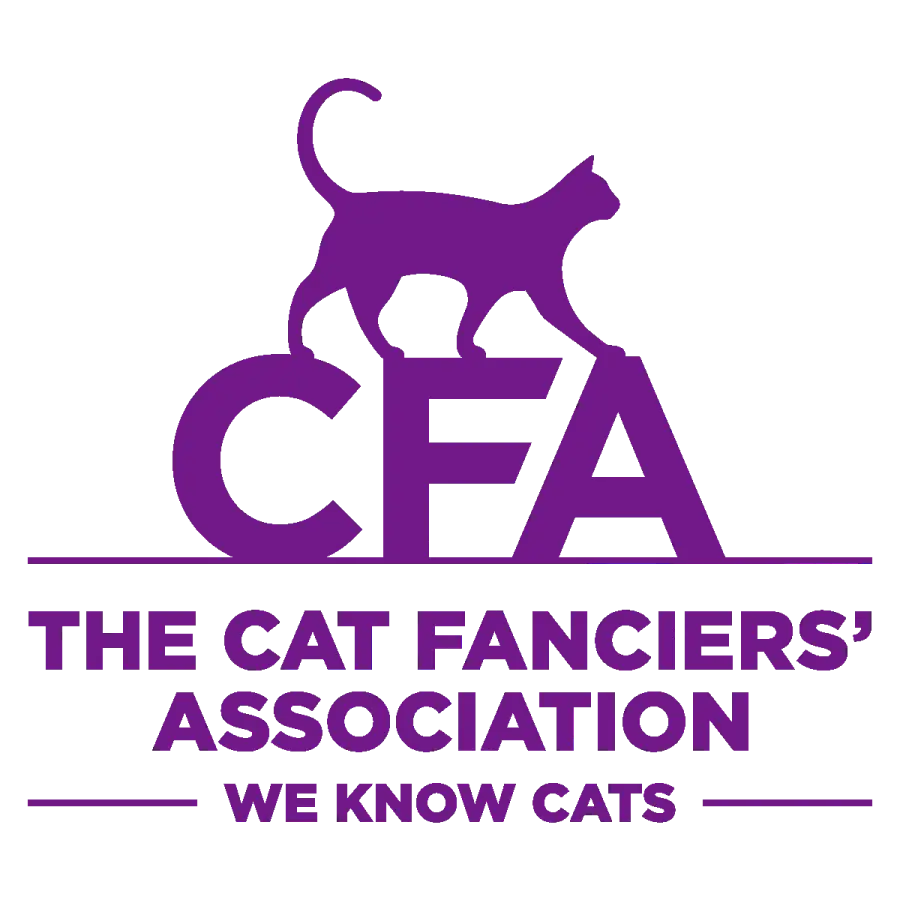Maine Coon Size Overview
Maine Coons are known for their sheer size, making them the largest domestic cat breed. Their size is one of their most notable features, distinguishing them from other felines and leading to repeated comparisons with dogs. To understand Maine coon size, it’s important to look into their weight, length, and how they develop with age.
How Big Are Maine Coons?
Male Maine Coons usually weigh anywhere from 15 to 25 pounds on average, although some males can grow up to 30 pounds! Females are smaller, averaging 10 to 15 pounds. Maine Coons don’t come close to the numbers of dogs, but they’re certainly unique among felines.
With their wide bodies and strong frames, Maine Coons have a look that commands attention. Genetics is a major factor in the size difference between the sexes. Males naturally grow larger due to the traits they were born with.
They can grow to a fabulous length of up to 38 inches from nose to tail! Their long, bushy tails add another 12 to 14 inches to that measurement. Their shoulder height is between 10 and 16 inches, giving them a regal presence in any home.
These measurements put them at the top of the non-hybrid cat breed world, a title that they wear proudly. The size of Maine Coons varies greatly due to breeding practices. Selective breeding can create smaller cats in a separate line.
In fact, Maine Coons are often smaller than medium-sized dog breeds. As an example, Labrador Retrievers generally weigh between 55 and 80 pounds. They’re on par with smaller dog breeds like Beagles or Miniature Schnauzers, who are in the 20- to 25-pound range.
Their big fluffy coats and regal carriage make them look like very big dogs. They might be dwarfed by most big dogs, but these little guys don’t let anything stop them!
When Do Maine Coons Fully Grow?
Maine Coons are slow to mature, usually not reaching their full size until they are 3 to 5 years old. This long growth period is very unusual for felines. In comparison, most other breeds will be fully grown in 1 to 2 years tops.
For the first year, Maine Coons go through extreme growth spurts, sometimes doubling or even tripling in size within just months. After this first period, their growth slows significantly. For the next few years they slowly grow into their frames.
Diet and health contribute heavily to their growth, too. Correct nutrition, particularly in the formative kitten stage, helps develop strong bones and muscles. On the flip side, inadequate care or lack of nutrition can make them grow less and keep them from reaching the maximum size they could have.
Reasons For Smaller Maine Coons
Of course, not all Maine Coons grow to be big cats, and a range of reasons lead to smaller-sized Maine Coons. Genetics is definitely the key factor as not every Maine coon inherits the traits for large size.
Environmental factors such as nutrition, physical activity, and general management practices play a role in the size of these breeds too. For instance, kittens brought up on a diet deficient in nutrition will not grow to be as healthy or strong as kittens who eat a diet built with high-quality food.
There’s a huge emphasis on breeding practices. Though some breeders advertise their cats as “giant” Maine Coons, size shouldn’t be the focus. When the focus is too much on size, it can incur serious health risks such as hip dysplasia or joint problems in cats that are too big.
Responsible breeders always breed for health and temperament first, providing you with a well-rounded companion.
Maine Coon Traits That Influence Size
Maine Coons are world-famous for their massive size, sometimes described as that of a small dog. Their imposing size isn’t happenstance – it’s the product of a perfect storm of physical traits, genetics, and history. Knowing these factors helps explain why Maine Coons are one of the largest domesticated cat breeds.
What Defines A Maine Coon?
Maine Coons might be the most famous big breeds. As for the average male Maine Coon, he should weigh somewhere between 13 and 18 pounds, with the females being a bit smaller at around 8 to 12 pounds. When it comes to their build, these cats are muscular and solid, which helps to enhance their commanding presence.
Aside from their size, one thing Maine Coons are known for is their gentle, dog-like disposition. They’re sociable, playful, and incredibly loyal, which makes them a popular choice for families. The breed’s lineage greatly influences its size.
These cats are the pride and joy of Maine. They are believed to have originated with long-haired breeds that sailors had on their ships, which bred with local felines. As time passed, their ability to endure Maine’s brutal winters and natural selection led to the preference of larger, heartier felines. This fascinating history plays a role in their large size and robust nature.
Physical Features Of Maine Coons
Maine Coons have a few traits that increase their impressive size. Their fuzzy ears and huge, bushy tails are stunning! These traits have a practical benefit as well, helping to insulate them in low temperatures.
Their tails alone can get up to 16 inches long, incredible! This contributes to their overall length, with some Maine Coons reaching lengths of up to 30 inches from nose to tail. Their thick, water-resistant double coat gives them a more imposing look and contributes to their size.
It’s not all for appearances. As you can imagine, this coat is extremely insulating, which helps them excel in colder climates. Their wide chests and heavy bone structure not only contribute to their muscular, powerful appearance, but give them an illusion of bulk.
Growth Patterns Of Maine Coons
Maine Coons take their time growing larger than other cat breeds. Once they are a year old, they typically reach around 80% of their final weight. The Maine Coon growth doesn’t end there.
During their first two to three years, they are still maturing, building muscle mass and can still gain considerable size. Therefore, it’s crucial to keep a close eye on their growth. Oversized Maine Coons are more likely to develop health issues, including hip dysplasia and joint issues.
As with many breeds, males tend to be larger than females. Owners will need to keep an eye on each one’s growth patterns and modify care as appropriate.

Comparing Maine Coons To Smaller Dogs
Because of their large size, sweet natures, and dog-like tendencies, Maine Coons are often compared to small dogs. Introduced in the 1860s, these cats are remarkable not only for their good looks, but for their astounding size. They feature oddities that frequently harken back to our dog friends.
Here’s a comparison of how they stack up against a few popular small dog breeds.
| Breed | Weight (lbs) | Height (inches) |
|---|---|---|
| Maine Coon (Male) | 13-18 | 10-16 |
| Maine Coon (Female) | 8-12 | 10-16 |
| Yorkshire Terrier | 4-7 | 7-8 |
| Pomeranian | 3-7 | 6-7 |
| Chihuahua | 2-6 | 5-8 |
| Shih Tzu | 9-16 | 8-11 |
1. Yorkshire Terrier Size Comparison
Of course, Maine Coons are a lot heavier than Yorkshire Terriers. Maine Coons can weigh as much as 18 pounds, and Yorkies are only about 7 pounds at full growth.
In height, Maine Coons beat them there too, measuring 10-16 inches at the shoulders as compared to the Yorkie’s 7-8 inches.
In terms of temperament, both breeds are affectionate and sociable, though Maine Coons tend to be a little more easygoing. Where Yorkies love being in the spotlight – even if it’s a little danger – they Maine Coons prefer to take in the action and join in only when they want to.
All this combined makes Yorkies a little higher energy and more demanding in social situations. Because they are such large cats, Maine Coons require larger living spaces to explore and big, sturdy scratching posts.
Yorkies do better with smaller beds and toys. Feeding requirements are different as well since Maine Coons need to eat more to support their size.
2. Pomeranian Size Comparison
The Pomeranian’s paltry 3-7 pounds feel positively weightless next to the Maine Coon’s hefty 13-18 pounds. Adult Pomeranians only get to a height of 6-7 inches tall, far smaller than Maine Coons.
Both breeds are very playful, but their play styles may not mix well. Maine Coons can be gentle giants at play, while Pomeranians are more likely to have a spicy spark.
Their playful natures can complement one another, though supervision is key because of the size difference. Grooming is the other big difference. Maine Coons require frequent grooming to keep their long, lush coats in good shape.
Pomeranians are just as high maintenance in terms of grooming, but their smaller size helps cut down on the time.
3. Chihuahua Size Comparison
Chihuahuas, the littlest of the bunch, weigh 2-6 pounds and 5-8 inches tall. By comparison, Maine Coons are giants in both weight and stature.
Behaviorally, Chihuahuas are known to be loyal with a tendency to be suspicious around strangers. Maine Coons are usually more friendly toward visitors and more flexible in social situations.
In fact, introducing a Maine Coon to a Chihuahua would be a challenge, simply because of the Maine Coon’s larger size. Proper, supervised introductions are important to making sure these two can have a happy coexistence.
4. Shih Tzu Size Comparison
Shih Tzus, which weigh 9-16 pounds and stand 8-11 inches tall, are a better match for Maine Coons. Maine Coons still win out on length, sometimes reaching 38 inches long including their tail.
Either breed will be loving companions that want to be near their family most of the time. Shih Tzus are lap dogs, Maine Coons aren’t quite so dog-like, but they will like to be near you, not necessarily on top of you.
Grooming habits are a little different too. Maine Coons need weekly brushing to avoid matting, and Shih Tzus like regular trims to keep them looking adorable and show-worthy.
Comparing Maine Coons To Similar-Sized Dogs
Maine Coons are well known for their impressive size, an attribute that makes them stand out among other domestic cats. To get a clearer picture of their size, it’s easiest to compare Maine Coons to medium-sized dog breeds. By examining their dimensions, behavioral traits, and care requirements, we can highlight what makes Maine Coons distinct and what they share with similar-sized canine companions.
| Breed | Average Weight (lbs) | Average Height (inches) |
|---|---|---|
| Maine Coon | 10-25 | 10-16 |
| Boston Terrier | 12-25 | 15-17 |
| Cavalier King Charles | 13-18 | 12-13 |
| Beagle | 20-25 | 13-16 |
| Miniature Poodle | 10-15 | 10-15 |
| Jack Russell Terrier | 13-17 | 10-15 |
1. Boston Terrier Size Comparison
Maine Coons and Boston Terriers share a weight range, with both breeds occurring from 12-25 pounds. Boston Terriers are typically a bit taller – 15 to 17 inches at the shoulder. On the other hand, Maine Coons usually stand about 10 to 16 inches tall.
While there are these differences, both breeds are very spirited and playful. In addition to their cuddly appearance, Maine Coons are famous for their interactive, dog-like personalities, frequently playing games such as fetch. Boston Terriers do best with social play and running around. This can make them wonderful partners for busy families.
Grooming is another area where the two breeds differ. For a breed that’s known for its beautiful fur, Maine Coons do need grooming to properly care for their long and thick hair, especially when they’re shedding. Boston Terriers have short, sleek hair that needs very little attention. They still need to be regularly groomed to control shedding and keep their skin clean, healthy, and free of irritants.
2. Cavalier King Charles Spaniel Comparison
Maine Coons and Cavalier King Charles Spaniels are similar in size, the latter weighing an average of 13-18 pounds. Cavalier King Charles Spaniels usually grow to a maximum of 12-13 inches. Long, muscular bodies and bushy tails make Maine Coons appear much more sturdy.
Both breeds are extraordinarily social and do best with regular human contact. Maine Coons are known for being gentle, affectionate creatures who enjoy companionship, and often develop strong attachments to their families. Cavalier King Charles Spaniels are lovable dogs that are adaptable and easygoing.
This versatility makes them wonderful, adaptable companions for many different types of households! Care-wise, Maine Coons are less energetic than the Cavalier’s moderate-energy care requirement. Both dogs and cats do best with a species-appropriate diet and frequent checkups at the vet to ensure they stay healthy.
3. Beagle Size Comparison
Beagles, at 20-25 pounds, are a pretty good fit for the high end of the Maine Coon range. Their overall size is comparable, as even the largest breeds of cat are not more than 13-16 inches tall. Despite Maine Coons being about the same size as Beagles, their body constructs are drastically different.
Beagles have a short, stocky build where Maine Coons have a more elongated structure. With their lively and sociable demeanor, both breeds are well-suited to family life alongside children. Maine Coons tend to like interactive toys and games, while Beagles usually like to spend their time outside – going for walks or exploring.
Grooming needs are a night and day difference. Maine Coons need to be brushed regularly to avoid matting, particularly in their thick undercoats. Beagle shedding is low to moderate year-round, with some seasonal shedding.
4. Miniature Poodle Size Comparison
Miniature Poodles, which weigh 10-15 pounds and stand 10-15 inches tall, would be a perfect match in size with Maine Coons. Both breeds are incredibly smart and trainable, but their behavior traits differ. Affectionate but independent, Maine Coons can entertain themselves but enjoy times of playing with their humans.
Conversely, Miniature Poodles are upbeat and very trainable. Grooming is one of the main differences between the two. Miniature Poodles need to be clipped regularly to keep their hypoallergenic, curly coats in check. Maine Coons’ long fur needs almost daily attention. Each requires care and feeding but in different manners.
5. Jack Russell Terrier Size Comparison
Another dog breed similar in size to the Maine Coon is the Jack Russell Terrier at 13-17 pounds and 10-15 inches tall. While comparable in size, Jack Russells are incredibly more active, needing at least an hour of exercise and mental stimulation a day.
Though Maine Coons are happy to chase after things with their human, they are a little more relaxed and readily entertain themselves indoors. Diet and exercise needs are different as well. Maine Coons require a diet high in protein to sustain their massive size.
At the same time, Jack Russells do best on diets designed to fuel their fast-paced lives. Like Maine Coons, Great Pyrenees do incredibly well with careful and thoughtful attention and daily exercise.
Comparing Maine Coons To Larger Dogs
Maine Coons are the gentle giants of the feline world, with many claiming they are as large as medium-sized dogs. They are the gentle giants of the cat world and the largest domesticated cat breed. It’s their extraordinary length, height, and weight that really distinguishes Maine Coons from all other cats.
This regal appearance, especially when compared to the average house cat, makes them a captivating choice for pet lovers who enjoy the company of a larger counterpart. Below, we explore detailed comparisons with several well-known dog breeds to provide a better understanding of how Maine Coons measure up in size, behavior, and care needs.
| Breed | Weight | Height |
|---|---|---|
| Maine Coon | 8-18 pounds (male/female) | 10-16 inches |
| English Springer Spaniel | 40-50 pounds (male/female) | 18-20 inches |
| Labrador Retriever | 55-80 pounds (male/female) | 21-24 inches |
| Golden Retriever | 55-75 pounds (male/female) | 21-24 inches |
| Border Collie | 30-55 pounds (male/female) | 18-22 inches |
| Great Dane | 110-175 pounds (male/female) | 28-34 inches |
English Springer Spaniel Size Comparison
Maine Coons measure anywhere from 10 to 16 inches in height and weigh anywhere from 8 to 18 pounds. By comparison, the English Springer Spaniel is much larger, weighing between 40 and 50 pounds and standing 18 to 20 inches at the shoulder.
Both breeds are sociable and affectionate, which makes them great family pets. While Maine Coons have a calm, sweet temperament, Springer Spaniels are high-energy and playful. Those are very different care needs.
While Springer Spaniels need intense exercise to be healthy, Maine Coons do well indoors and only need a moderate amount of play exercise. We have a huge variation in diets. Cats do best on high-protein, low-carb diets, whereas Springers require well-rounded dog food that supports their high energy.
Labrador Retriever Size Comparison
Labrador Retrievers, at 55-80 pounds and 21-24 inches at the shoulder, tend to overwhelm Maine Coons both in stature and body type. Despite their size disparity, these two furry friends have an all-around friendly disposition that makes them a perfect fit for families with children.
Maine Coons are frequently characterized as dog-like, in their loyalty and affection, similar to the Labs’ famed companionship. Grooming needs vary widely. Labradors shed seasonally and do best with frequent brushing.
Unlike most dogs, Maine Coons need regular grooming to maintain their luxurious, long, silky fur. This can make Coons a more high-maintenance choice when it comes to coat care.
Golden Retriever Size Comparison
Golden retrievers are similar in shape to Labradors but they’re bigger than Maine Coons. They usually measure 21-24 inches at the shoulder and weigh in at 55-75 lbs. Both breeds are rambunctious goofballs and love to play and interact with their human partners.
Maine Coons offer a more subdued type of mischief. Maine Coons enjoy playing and keeping themselves entertained indoors, as do Goldens with their outdoor activities and games. A good amount of daily exercise and calorie-dense meals are necessary to keep up with their active lifestyles.
Maine Coons, on the other hand, are happy with engaging indoor play and a premium diet made for cats.
Border Collie Size Comparison
Border Collies weigh between 30 and 55 pounds, and measure up to 18-22 inches at the shoulder. While both breeds are extremely smart, what makes them different is energy levels. Collies are beloved for their limitless enthusiasm and herding instincts, but Maine Coons are more like a peaceful yet inquisitive giant.
Grooming needs are another area of contrast. Because Border Collies have a double coat, they require frequent brushing to maintain their fluffy structure. Conversely, Maine Coons need more grooming to avoid mats and maintain their beautiful coats.
Great Dane Size Comparison
Great Danes are true giants, standing between 28-34 inches tall, and weighing generally around 110-175 pounds. These size disparities can present a big hurdle to socializing, particularly in homes that include both animals.
Though Maine Coons are outgoing and confident cats, they would likely be intimidated by the size alone of a Great Dane. While Great Danes are known as gentle giants, Maine Coons are known for their more agile, independent nature.
Acclimating a Maine Coon to a Great Dane takes time, patience, and careful supervision, but it can result in a beautiful bond.

Living With Maine Coons And Dogs
No wonder Maine Coons are known for their size and the awesomely friendly disposition. They are a wonderful complement to homes with dogs. Successfully raising both animals together takes time, effort, and knowledge of their distinct personalities and requirements.
With an emphasis on compatibility, proper introductions, and continued management, we can achieve a peaceful coexistence where both can thrive.
Compatibility Between Maine Coons And Dogs
Maine Coons are dogs in feline form. This trait can make them a better match with dogs compared to other cat breeds. They are affectionate, intelligent, independent and love to play with other pets.
Compatibility goes out the window if the dog breed is incompatible too. Golden Retrievers, Labrador Retrievers and Cavalier King Charles Spaniels are a few breeds coveted for their mild-mannered disposition. These breeds tend to adjust remarkably well to cohabiting with a Maine Coon.
Conversely, high-energy or prey-driven breeds such as Terriers often need more supervision and training than other breeds to get along with cats. Proper early introductions and socialization are key for both a Maine Coon and a dog.
They play a huge role in determining how smoothly the two pets will mesh. Beginning socialization at a young age for both animals will allow them to create positive connections with one another. It’s all about reading body language, which is key to making this a success.
A wagging tail and relaxed posture in dogs mean they are at ease. In the same way, a relaxed body language in Maine Coons indicates they’re comfortable. On the other hand, if a cat’s muscles are tense, they’re growling or hissing, these are signs that you should change course.
Introducing Maine Coons To Dogs
A calm, positive introduction helps ensure peace for years to come. Here’s a step-by-step guide:
- Separate Spaces: Provide initial introductions. Begin by keeping your Maine Coon and the dog in separate rooms. Help them familiarize themselves with each other’s smell by exchanging blankets or toys.
- Use a baby gate or a cracked door to let them see each other without direct contact.
- Keep the dog on a lead and let the Maine Coon come to the dog when it feels ready.
- Limit initial interactions to a few minutes, gradually increasing the time as both pets grow comfortable.
- Use treats and praise to reinforce positive interactions for both pets.
Not only is a gradual introduction less stressful, but it will help prevent bad first impressions. Active management particularly during these initial introductions is key to keeping everyone safe and preventing an unpleasant encounter.
Managing Interactions Between Cats And Dogs
Even successful introductions are only the beginning. Continued supervision is key. Continued management is often what makes a Maine Coon and a dog’s relationship work.
Having clear boundaries and a safe space for each animal is key. Cats do best when they have vertical spaces, whether that’s with cat trees or shelves. These spaces empower them to escape and surveil their surroundings from an elevated position.
Dogs usually appreciate having a special retreat too. They will need a quiet corner, equipped with a bed or crate where they can chill out without interruption.
Positive reinforcement training is a powerful tool in teaching both pets to respect one another’s space. With reward-based training, you can reward the desired behavior, whether it’s the dog remaining calm or the Maine Coon coming closer without fear.
Consistent and daily playtime helps the dog burn energy and be comfortable. Interactive toys for the Maine Coon are important for helping them release energy to avoid frustration and conflict arising from boredom.
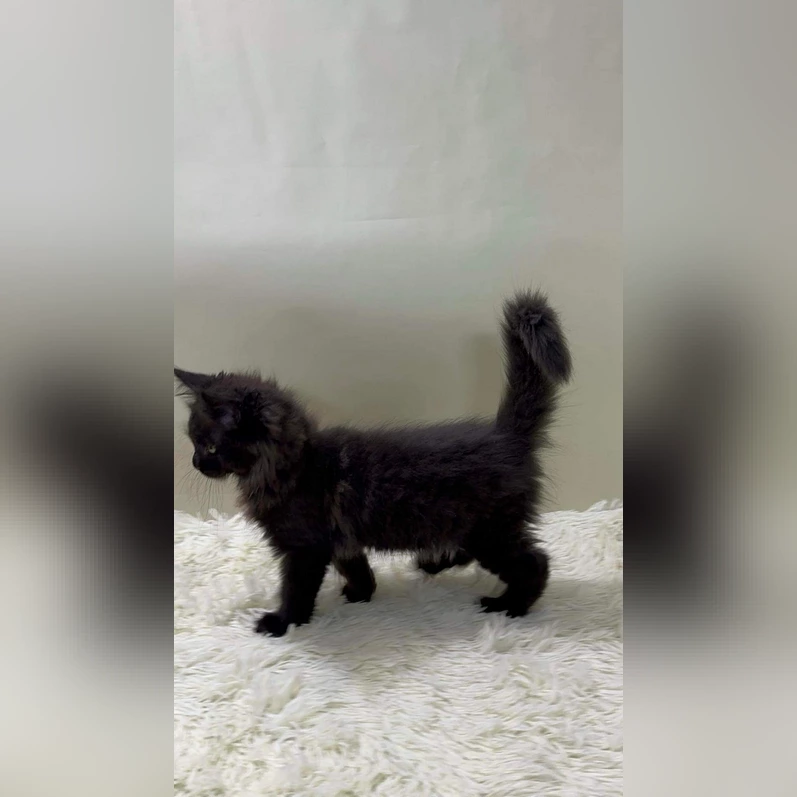
Care Considerations For Maine Coons And Dogs
Taking care of Maine Coons and dogs requires considerate focus on their specific requirements. It’s crucial to appreciate how alike their care routines are. Both animals flourish when given adequate food, routine care, and enriching environment. Properly balancing their care in a dog-friendly household will keep both healthy and happy.
Feeding Needs For Maine Coons And Dogs
Both Maine Coons and dogs need well-balanced diets that meet their unique nutritional needs. Here are key considerations:
- Their diet needs to be rich in animal protein, with fillers such as high fiber completely excluded. Vet-designed, allergen-free formulas are perfect for their health. Because they’ll quickly gain weight if overfed, portion sizes need to match with their energy requirements.
- Nutritional needs depend on size, breed, and energy levels. Protein, healthy fats, and carbohydrates are all equally important. Treats need to be restricted so they are not adding a lot of extra calories.
Separating their food is extremely important in preventing cross-contamination and making sure each pet receives the appropriate nutrition. Dog food lacks the high level of protein that Maine Coons need. Dog food can cause serious gastrointestinal issues in cats.
Portion control and structured feeding schedules prevent obesity, a prevalent risk in both pets.
Grooming Requirements For Both Pets
While Maine Coons and dogs require different grooming care, frequent grooming is essential to their happiness and health.
- Their long, thick coat needs to be brushed 2-3 times per week to avoid knots and tangles. Specialized tools such as slicker brushes and detangling combs are most effective.
- Grooming frequency varies by breed and coat type. Shorthaired breeds should be brushed at least once per week, while long-haired dogs may need daily attention. A deshedding rake or grooming glove can make a big difference.
Both pets will benefit from a grooming routine that includes regular nail trimming, ear cleaning, and dental care. These practices not only keep them looking their best, but help ward off potential health concerns such as skin infections or dental disease.
Creating A Comfortable Shared Space
Creating a peaceful environment for Maine Coons and dogs starts with intentional layout. Both pets require private spaces for eating, sleeping, and playing. Enclosed, separate spaces limit conflict and stress for both parties.
If you are using a new dog, keeping them separated for the first week will make the transition a lot easier. Most Maine Coons are naturally curious cats, and they usually enjoy being near dogs.
To keep them both comfortable, it’s important that their space includes a refuge retreat area. Owners need to be careful not to play favorites. Maine Coons are particularly sensitive to lamentable disparities in attention, which can prompt behavioral problems such as spraying or food evasion.
Slowly exposing them to shared spaces, like a living room or playroom, builds that trust. Enrichment is the best way to ensure pets are stimulated, interested, and fulfilled. Provide scratching posts for cats and chew toys for dogs to liven the environment for them.
